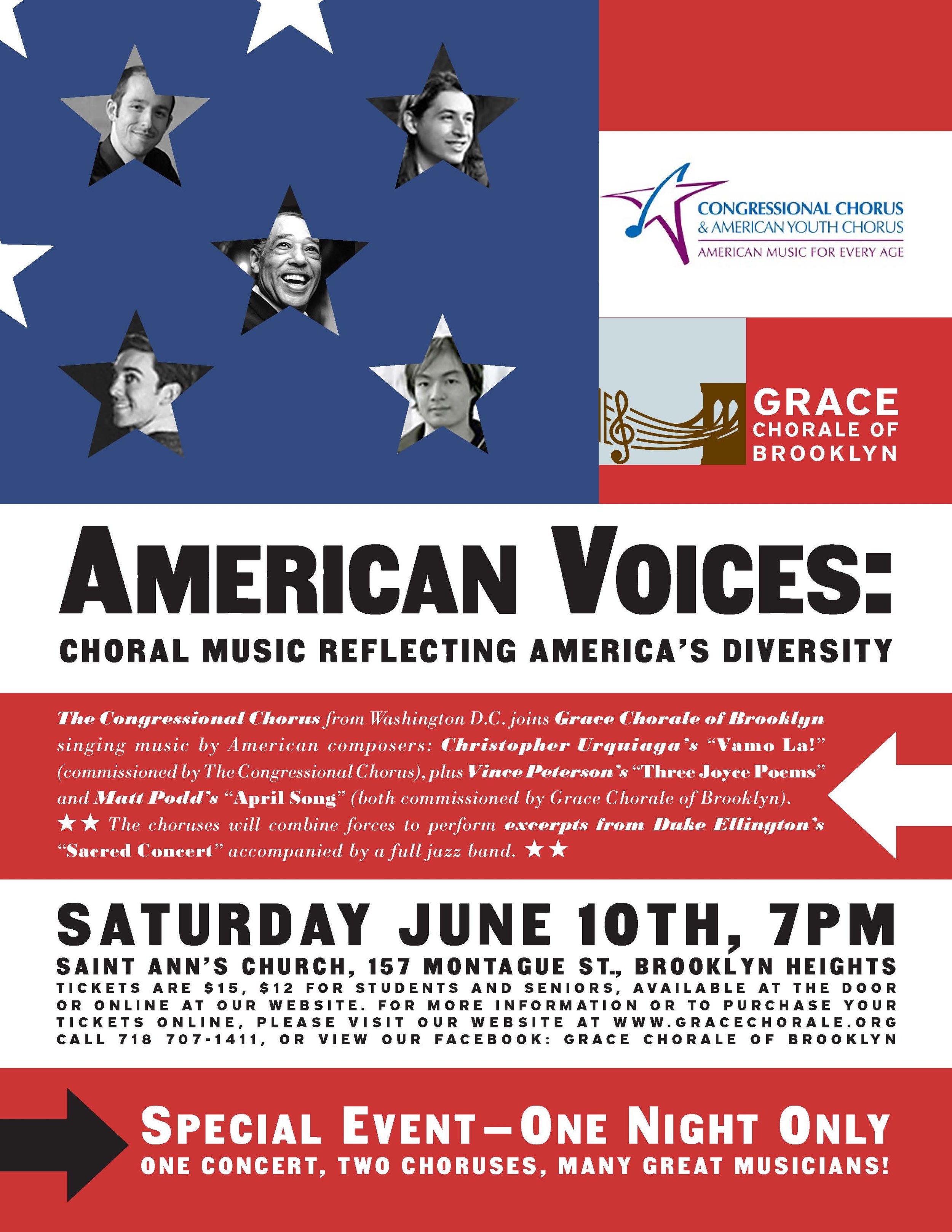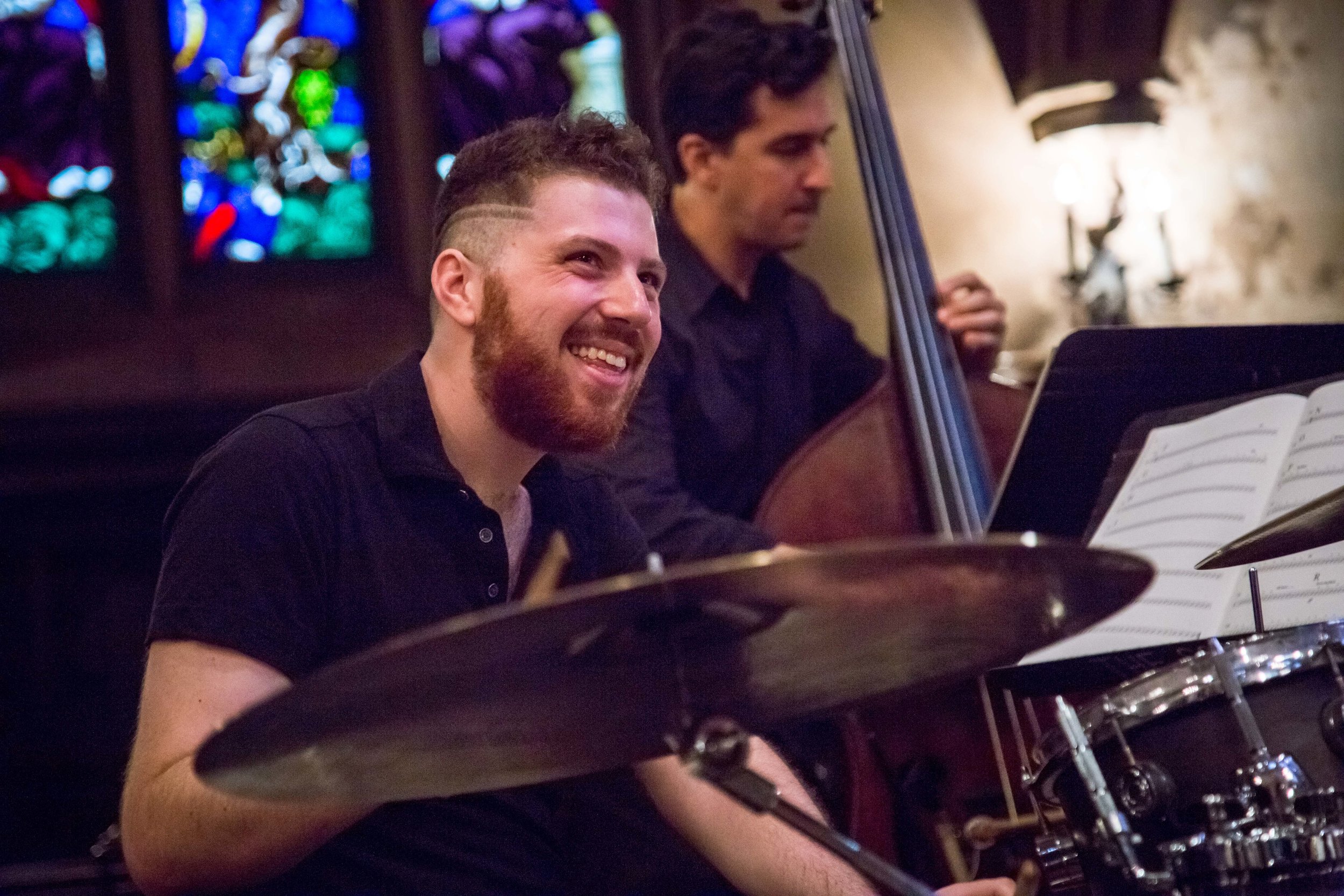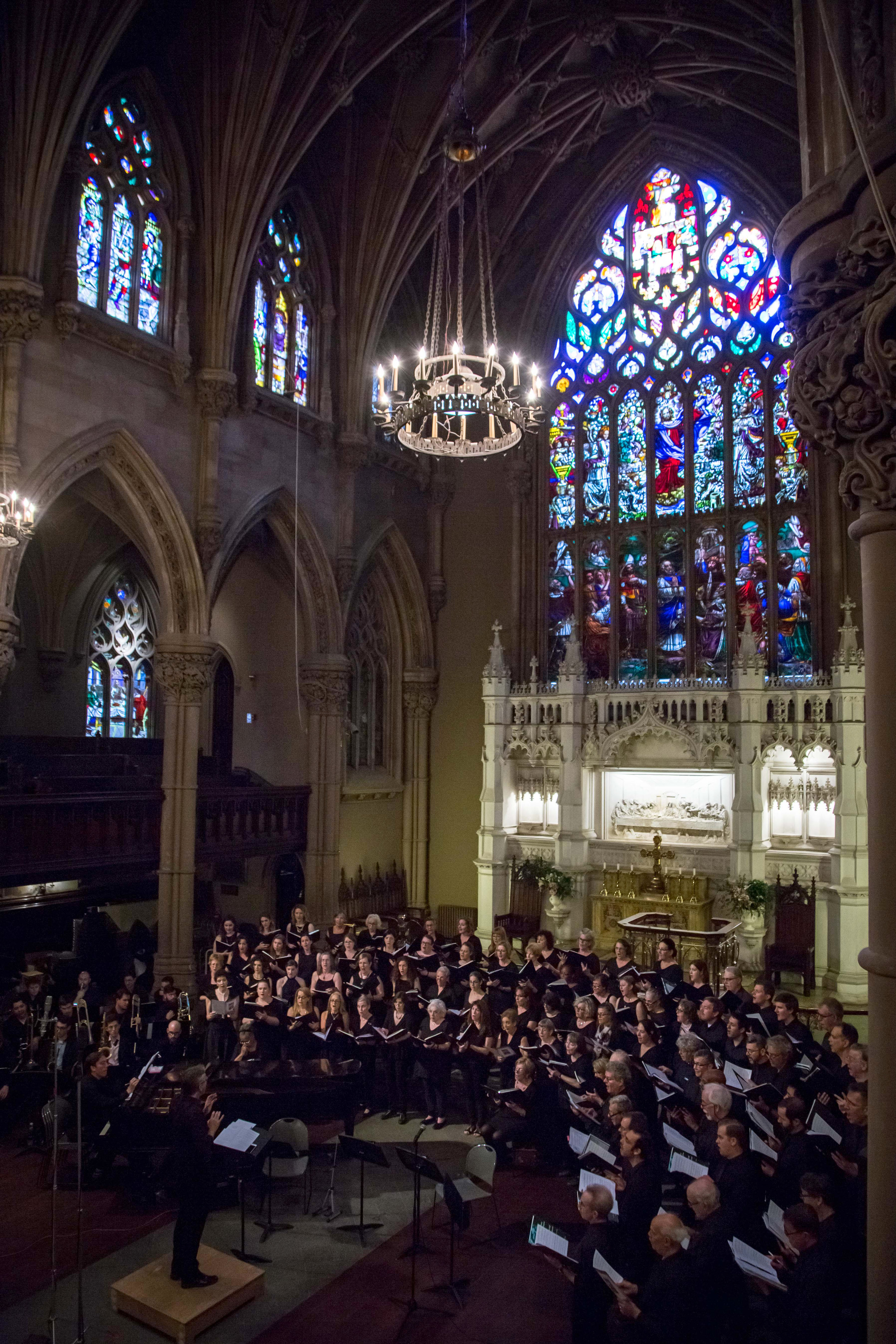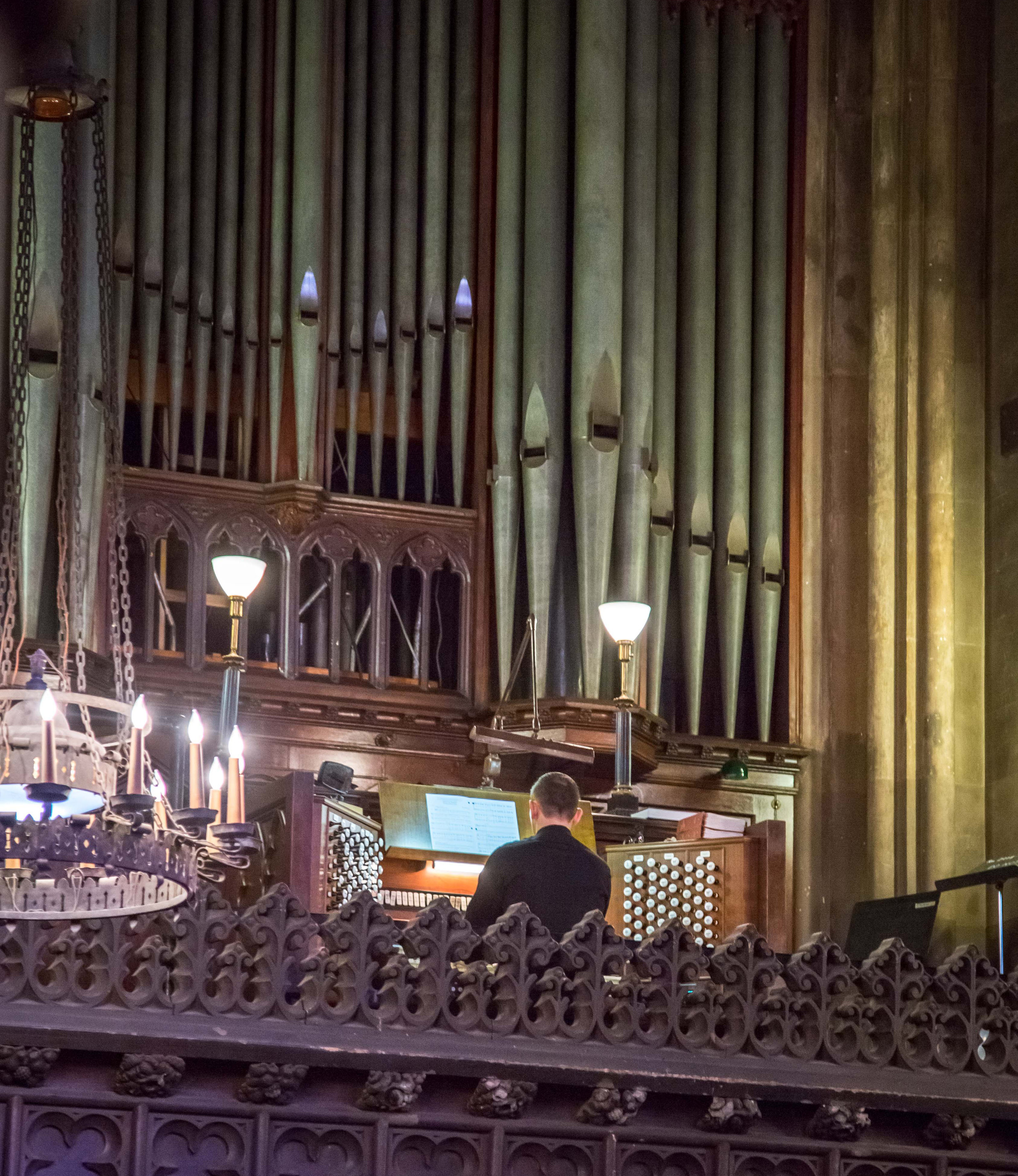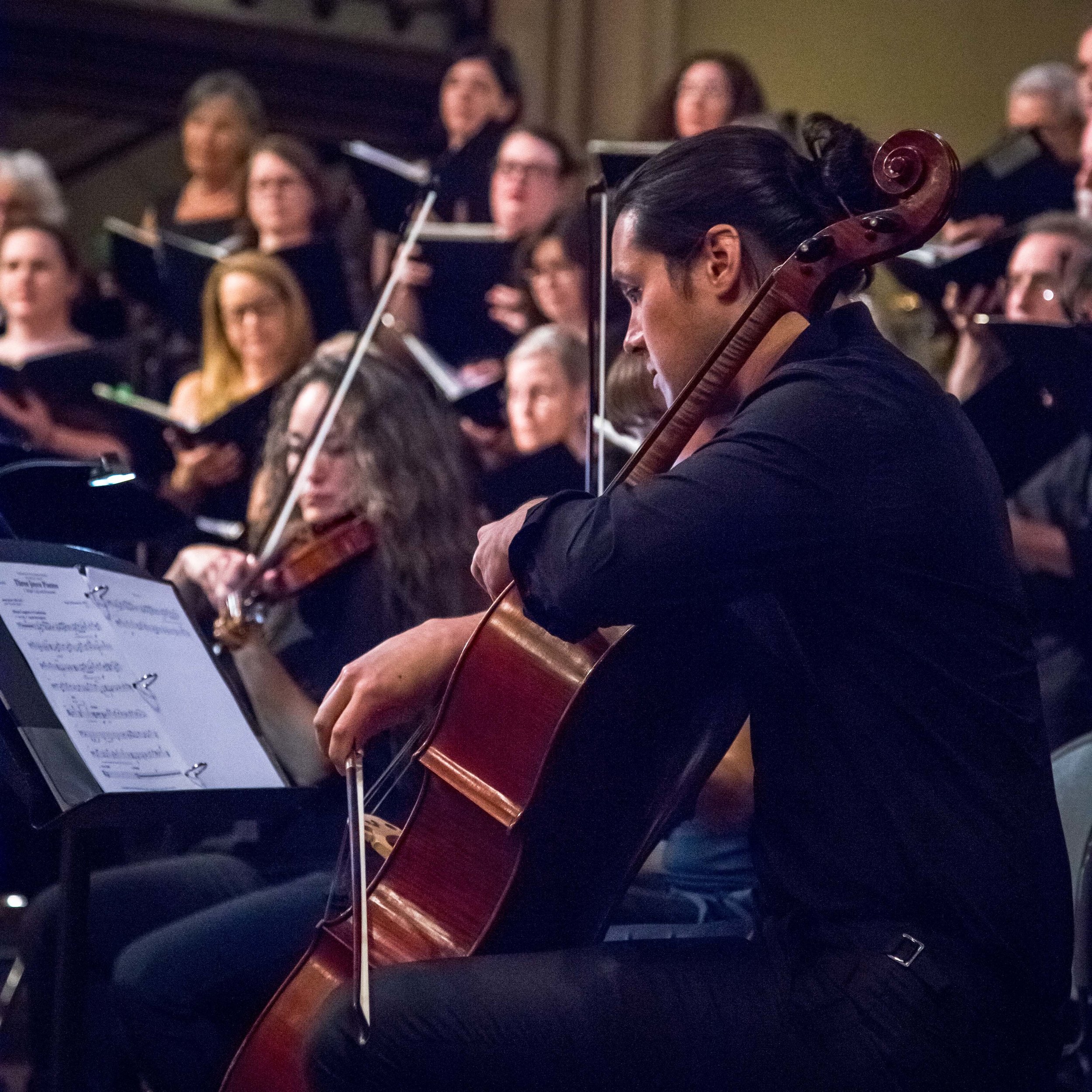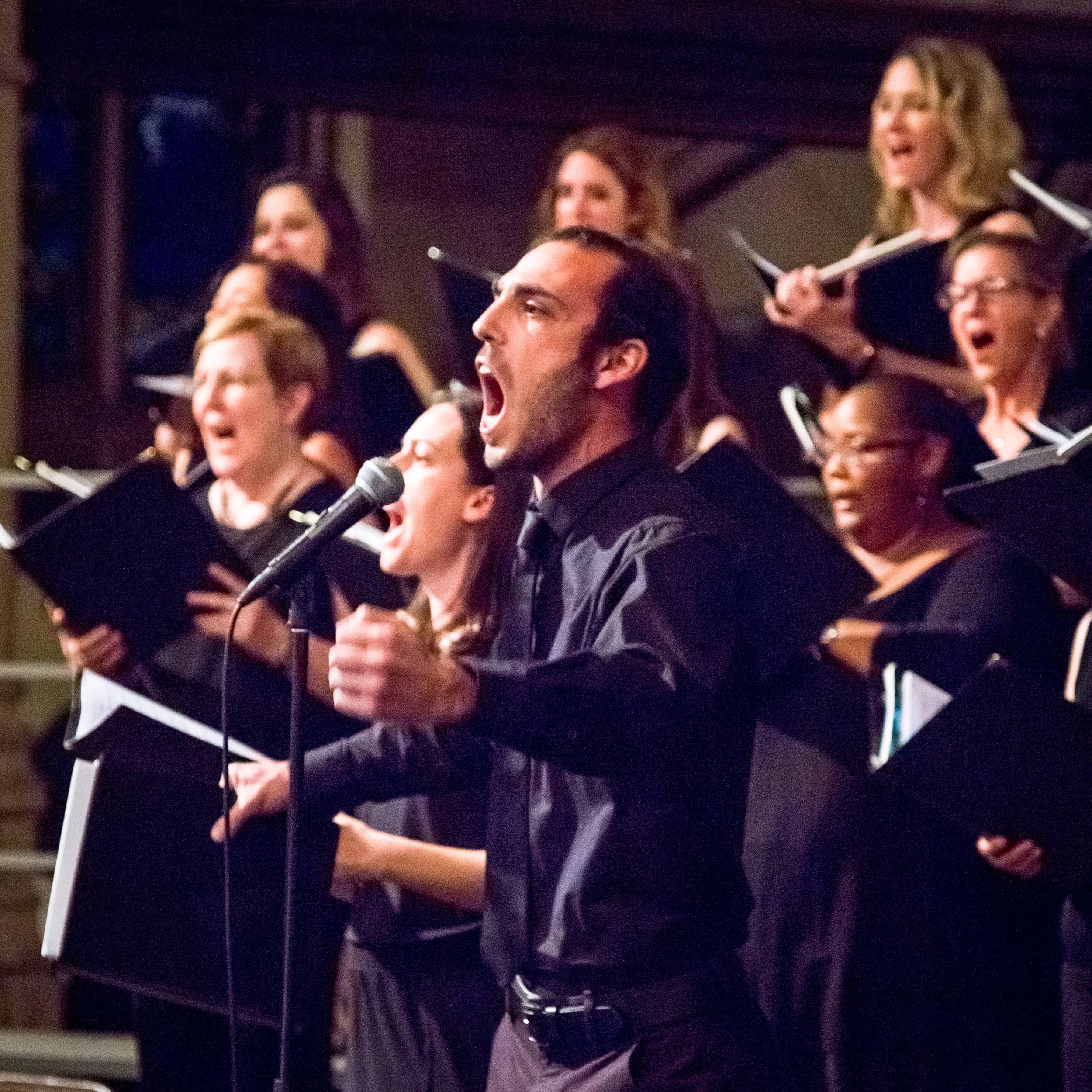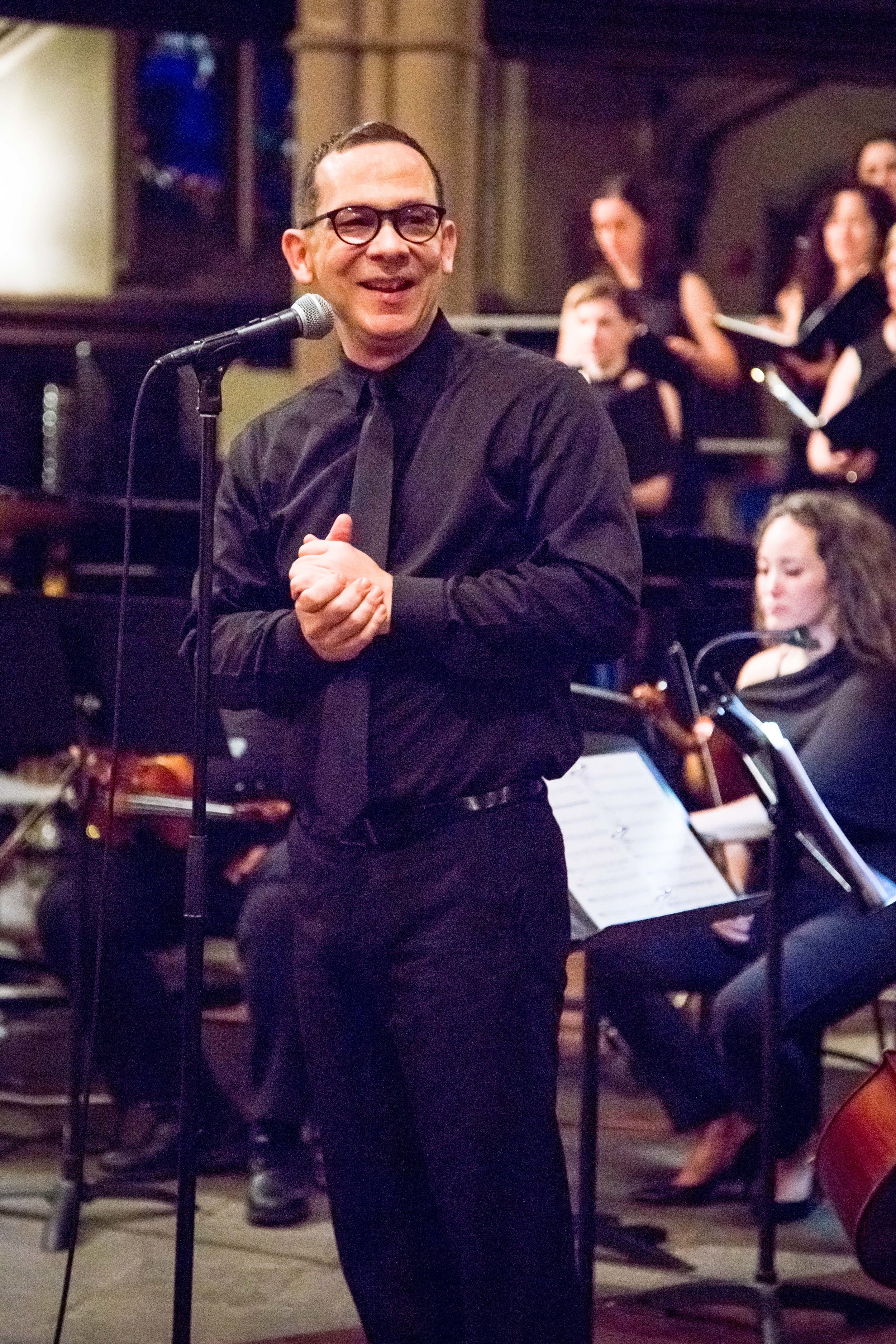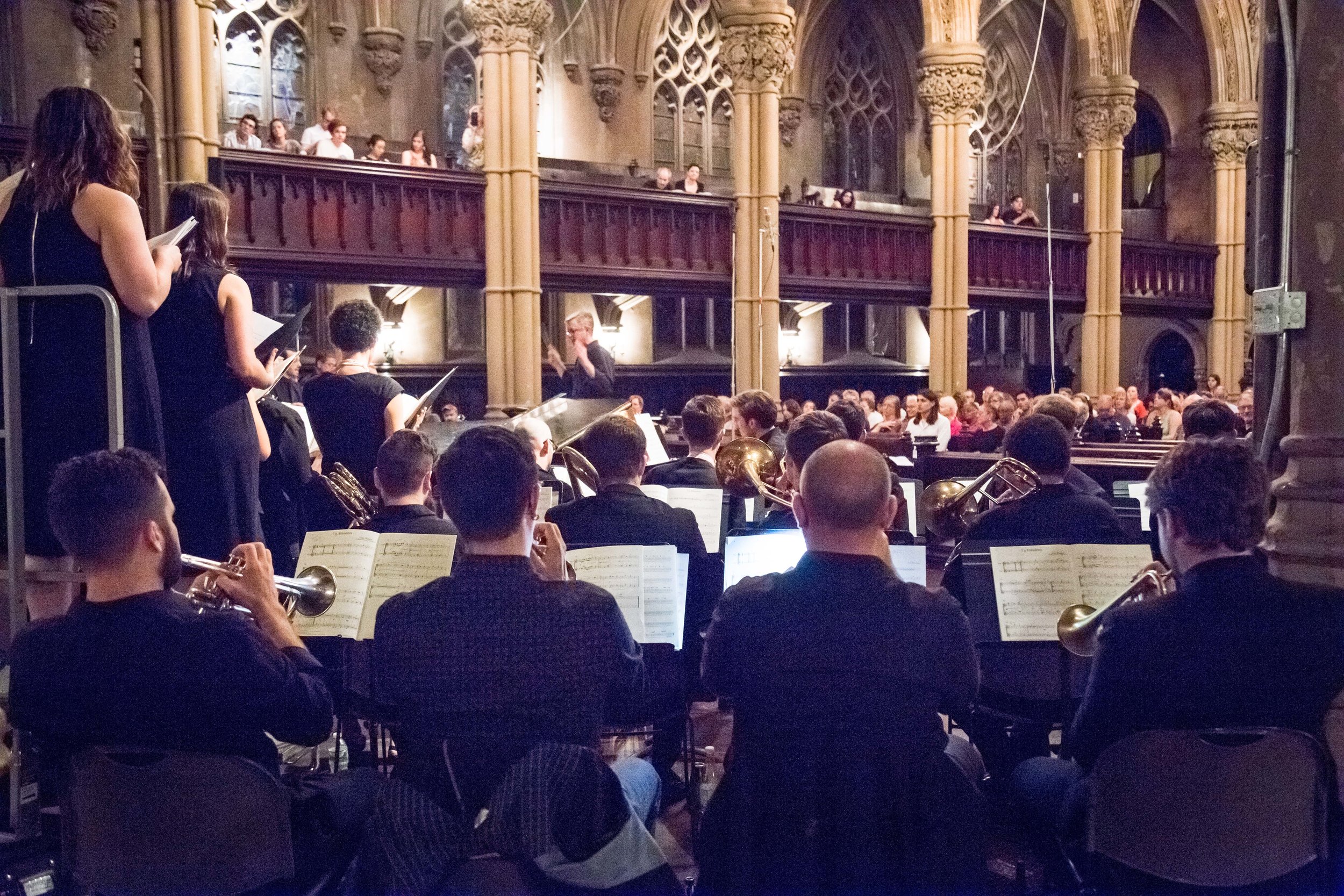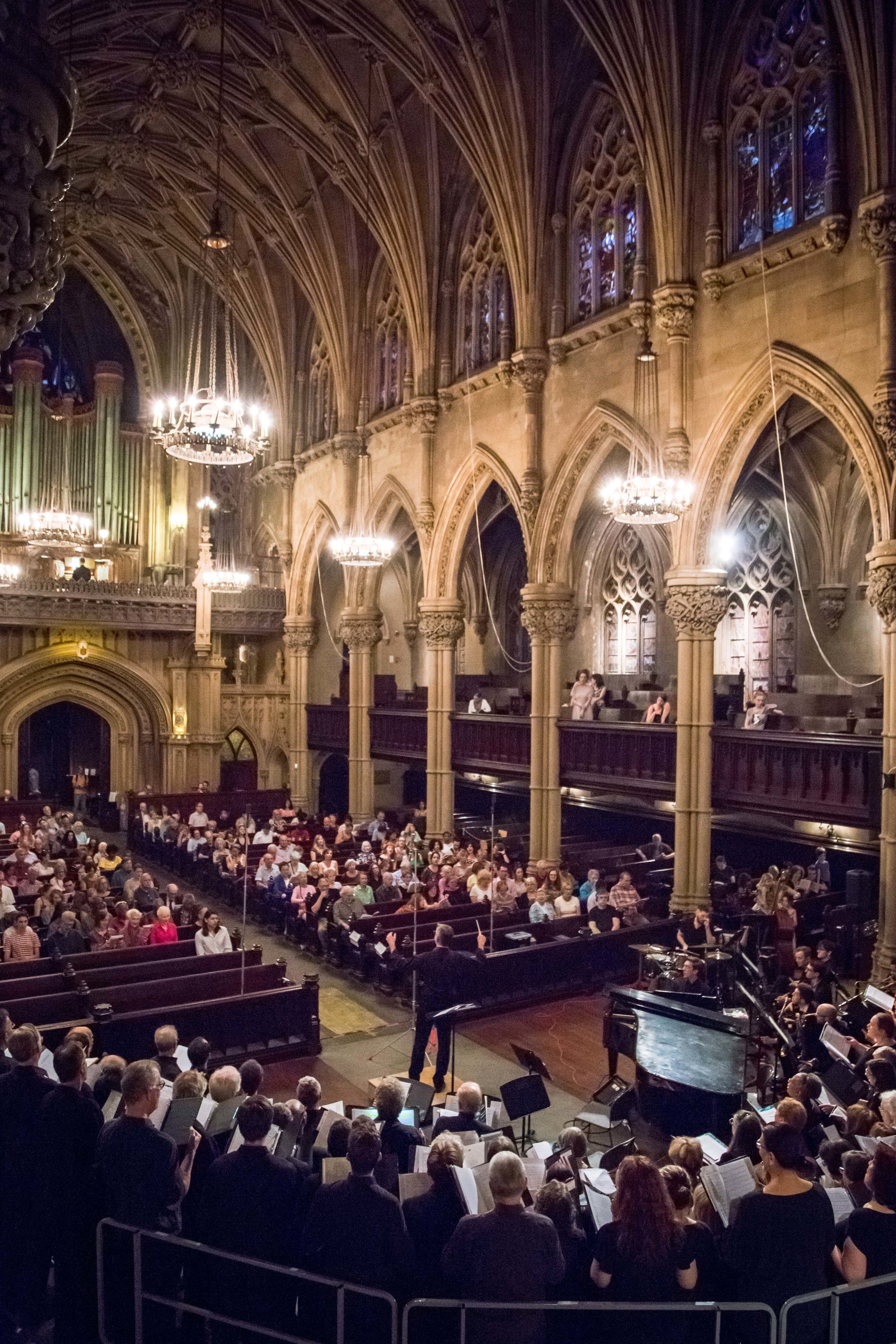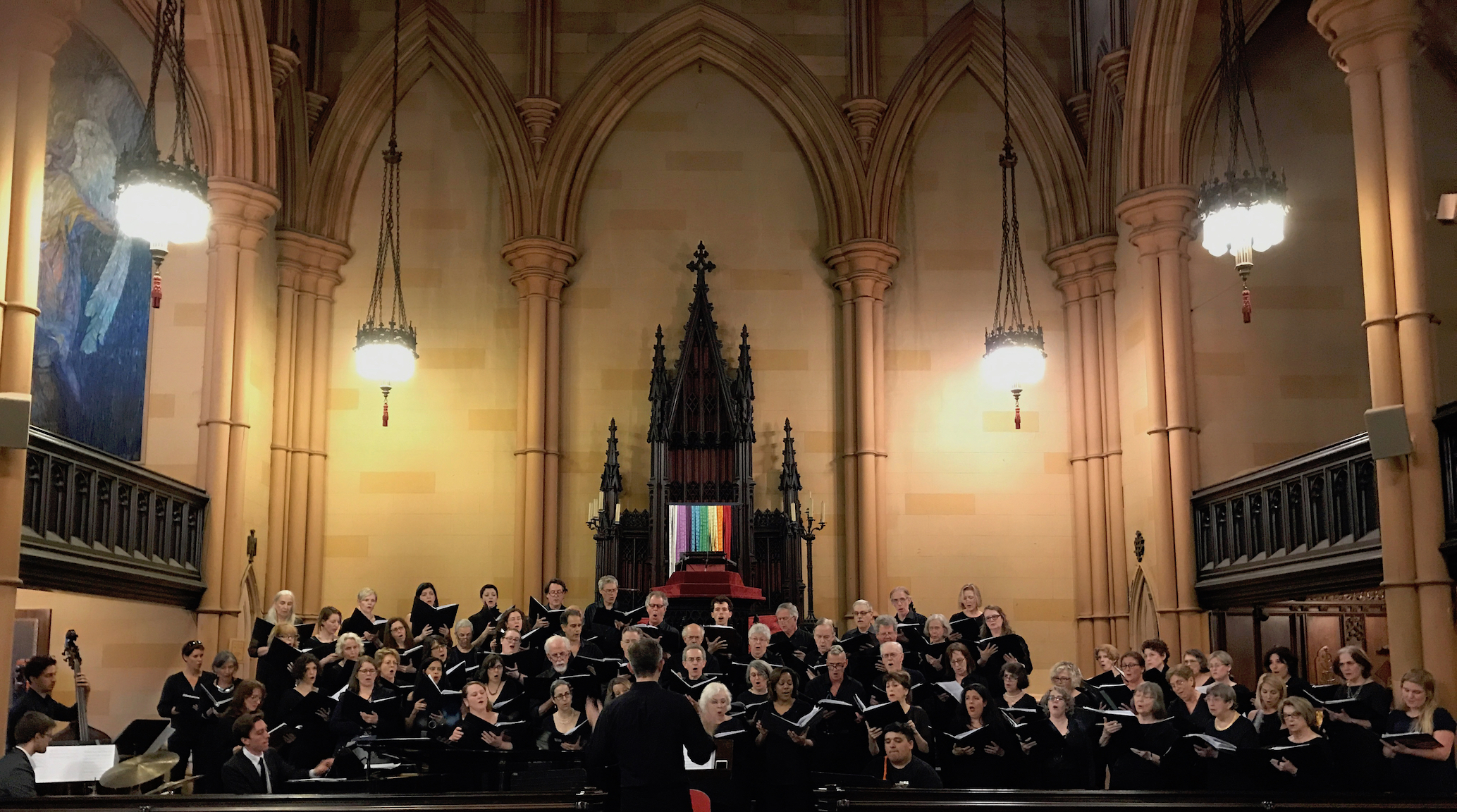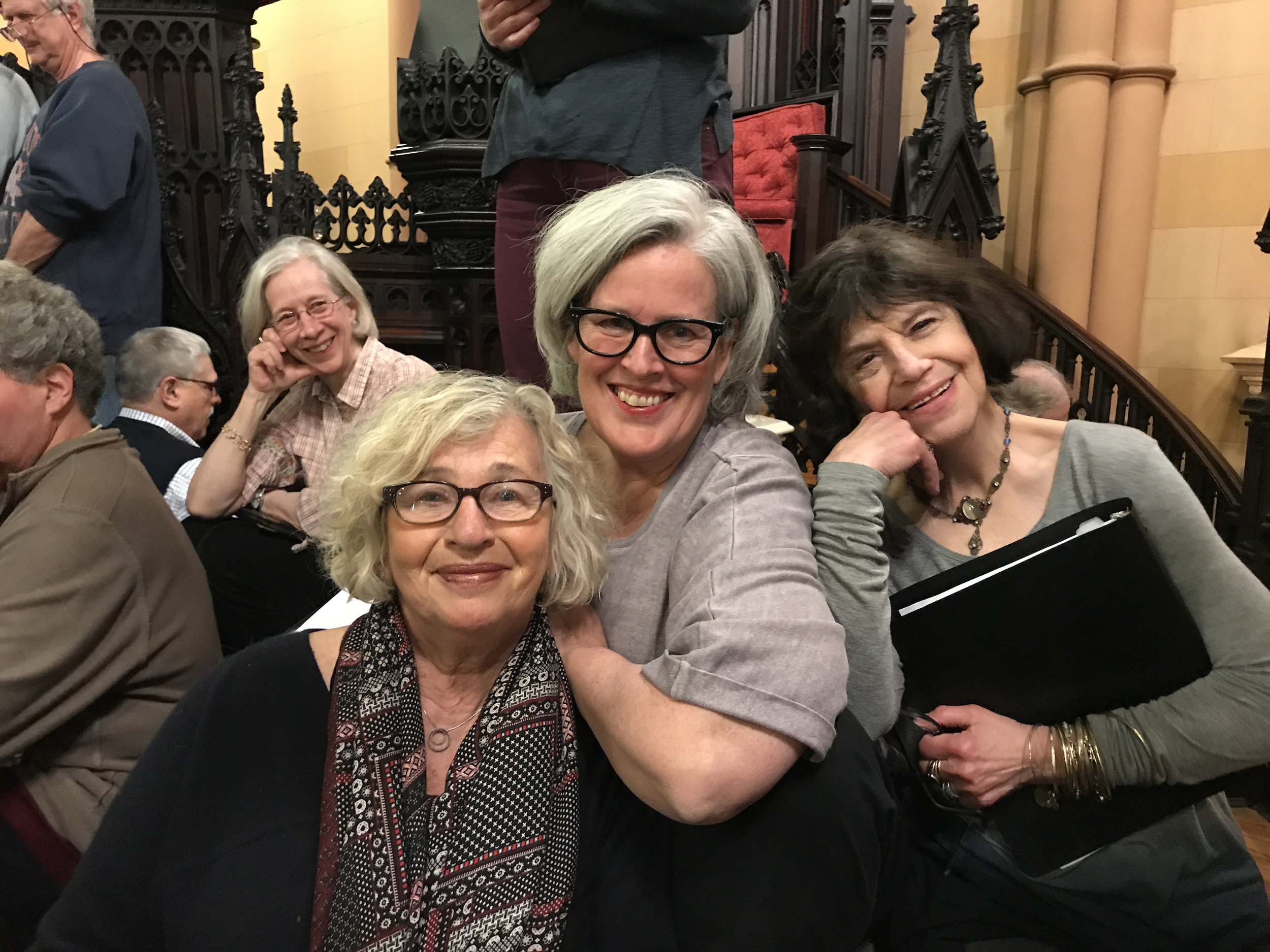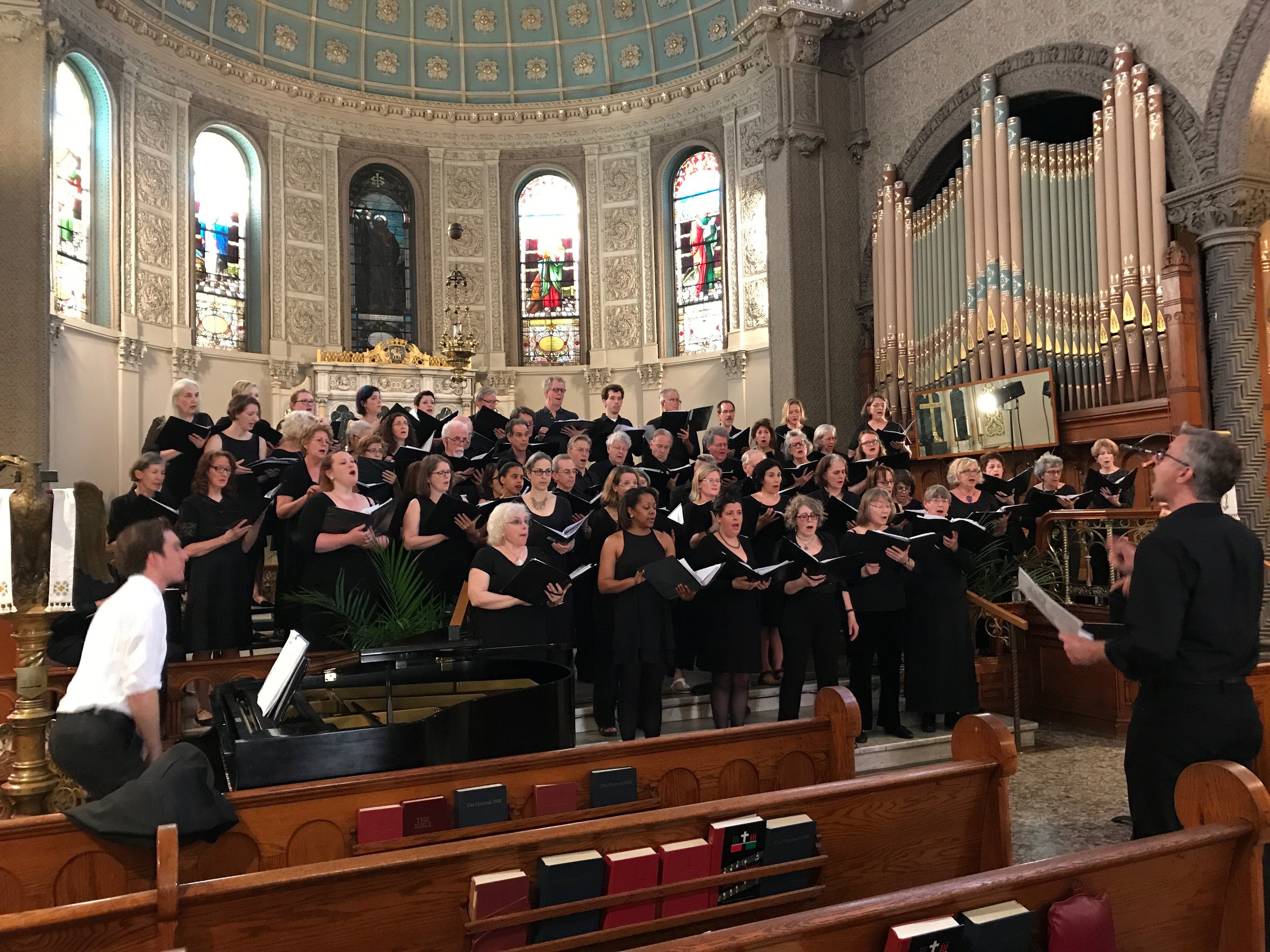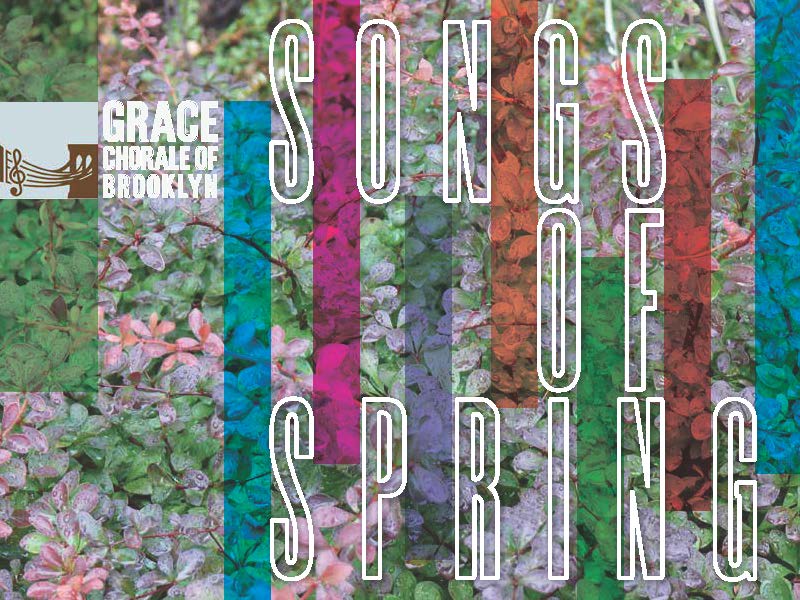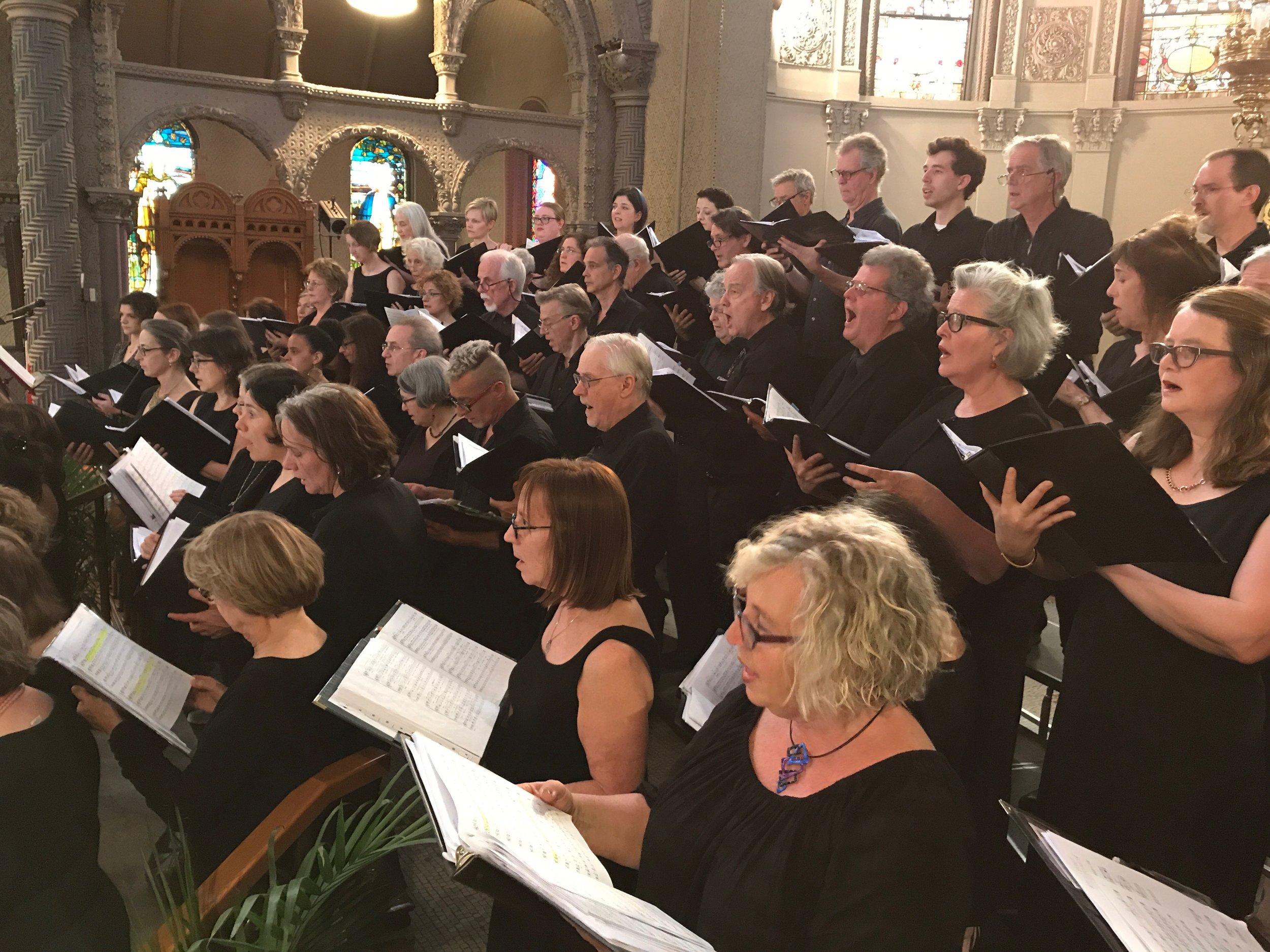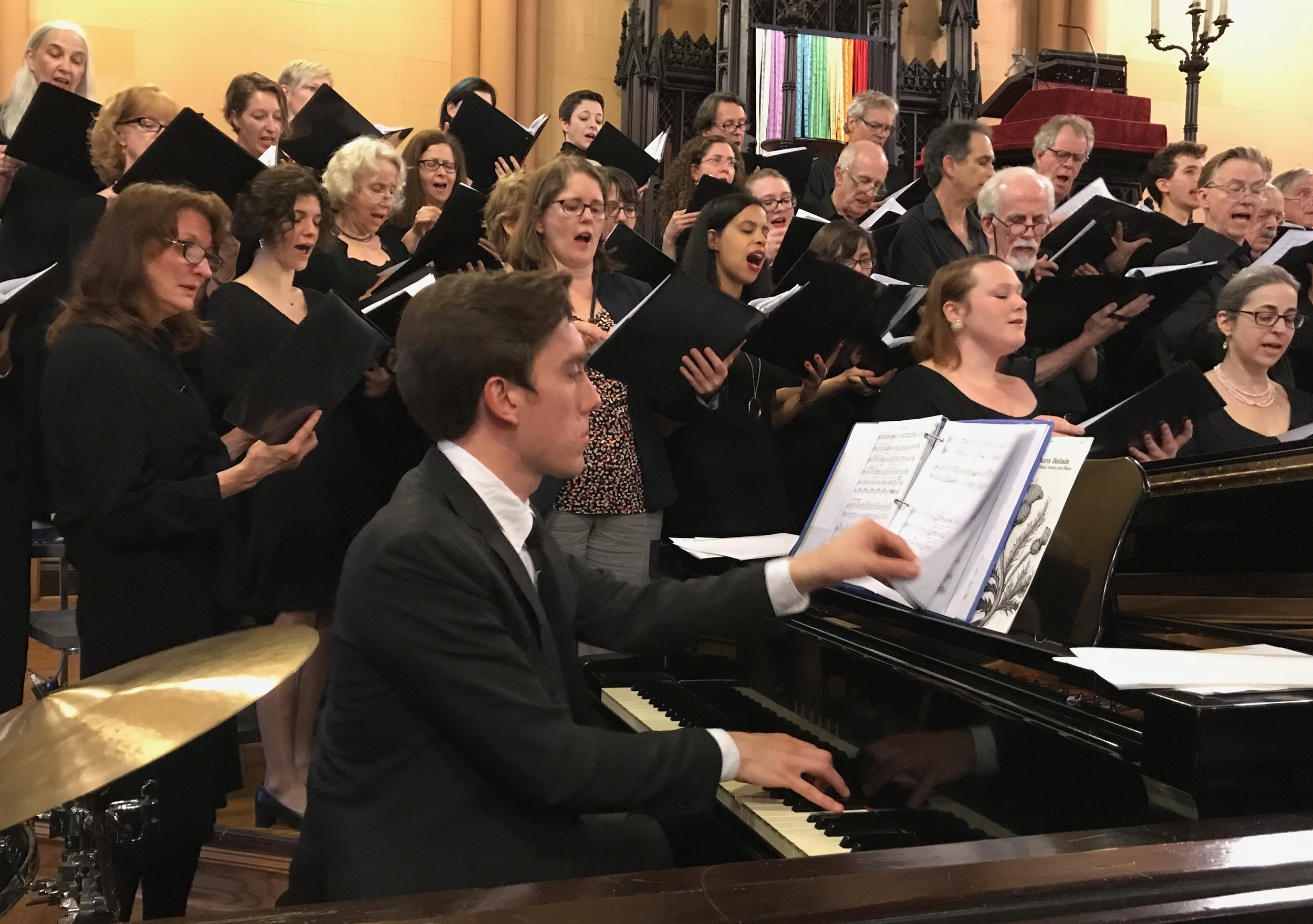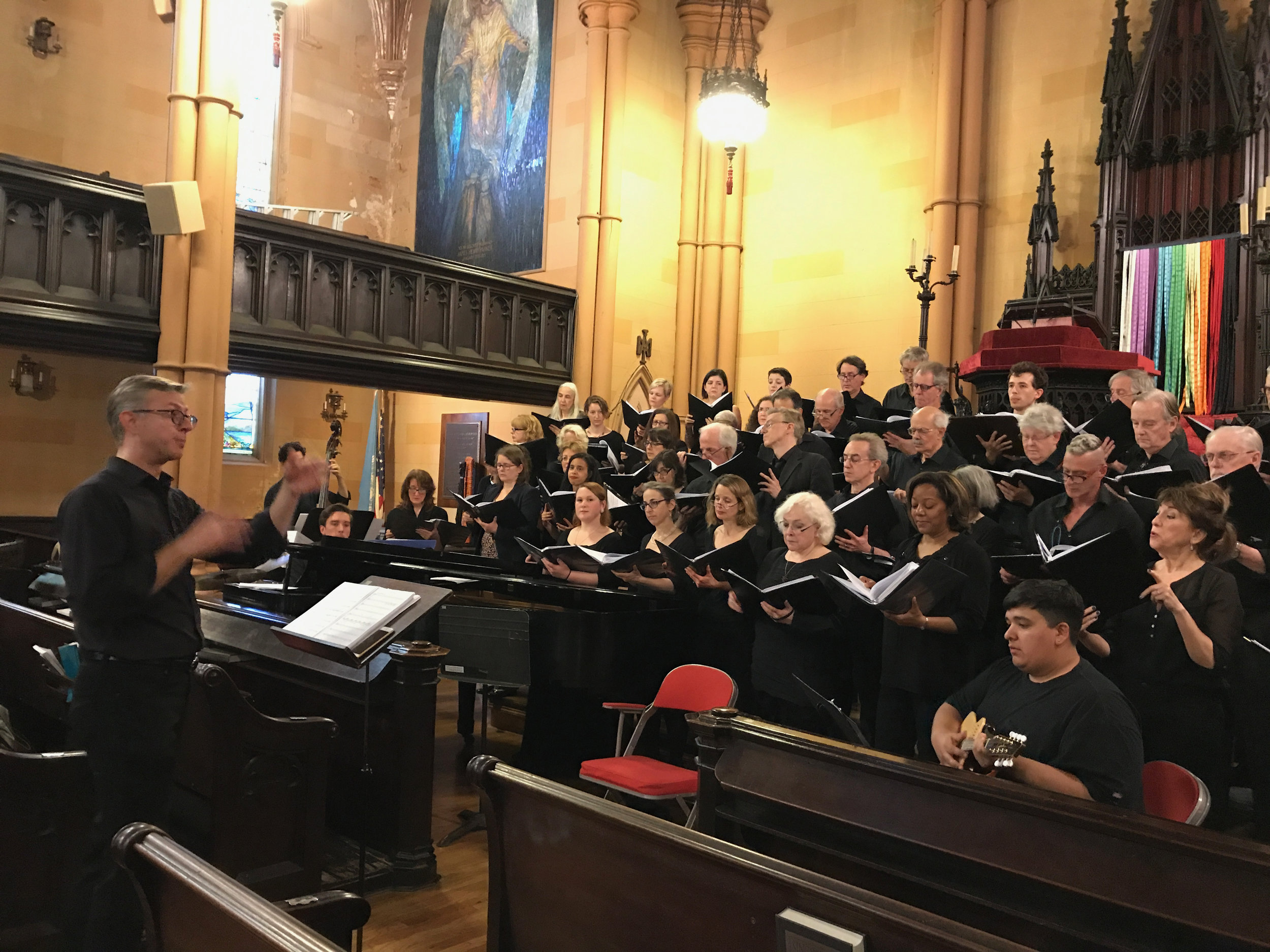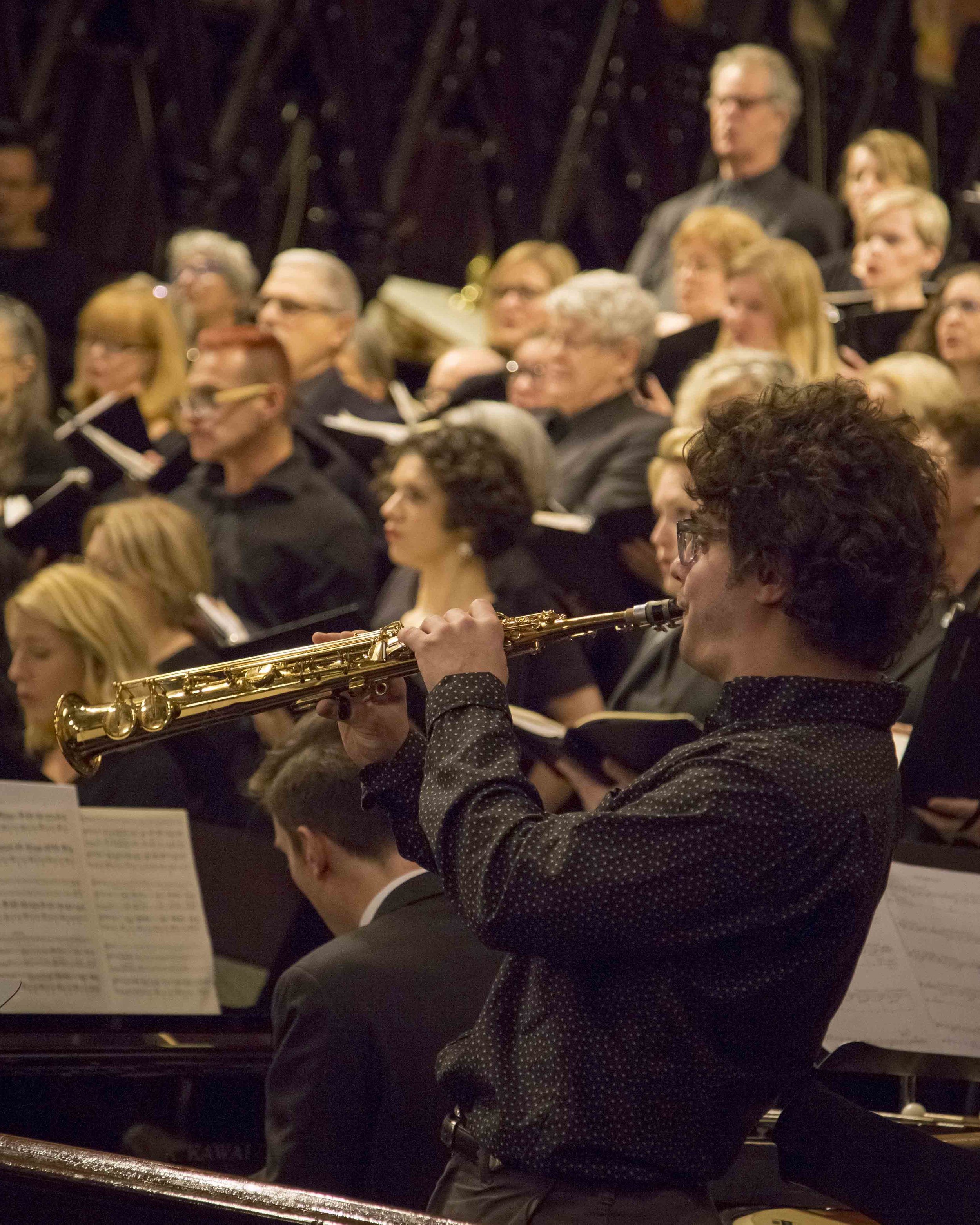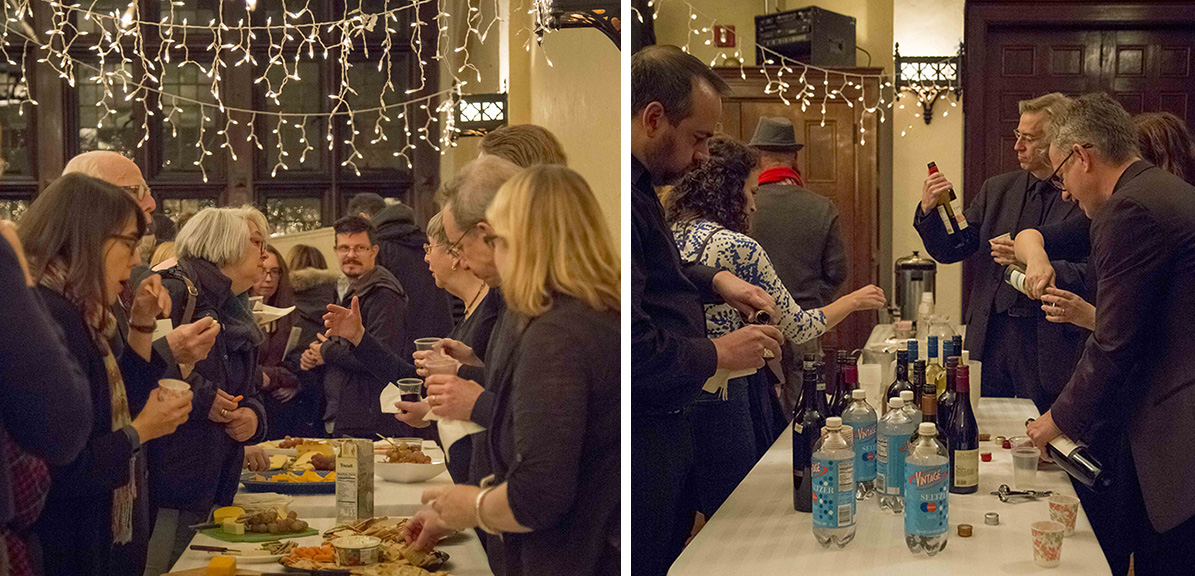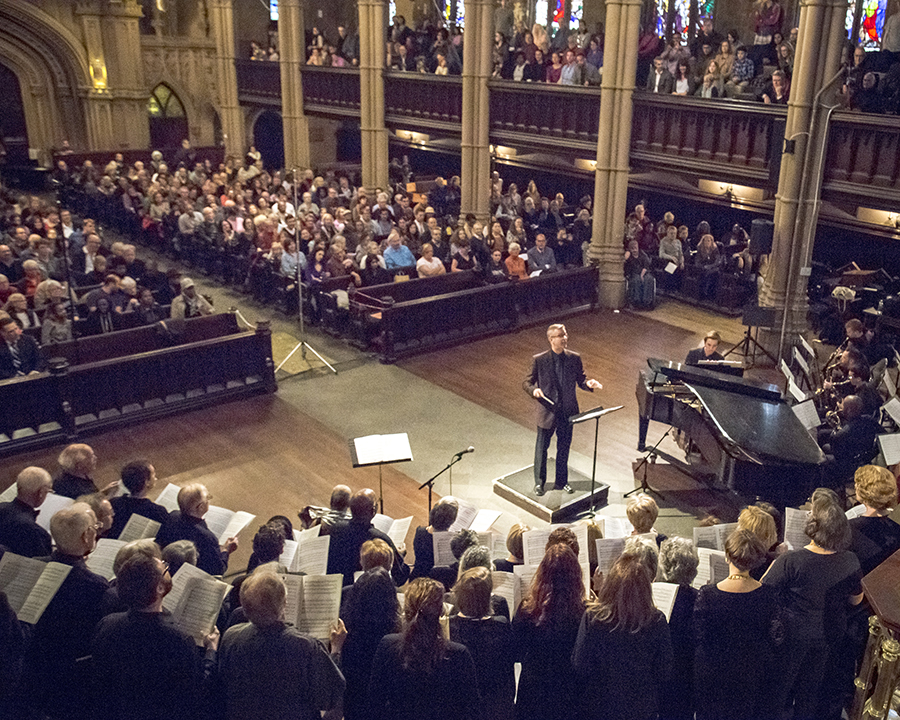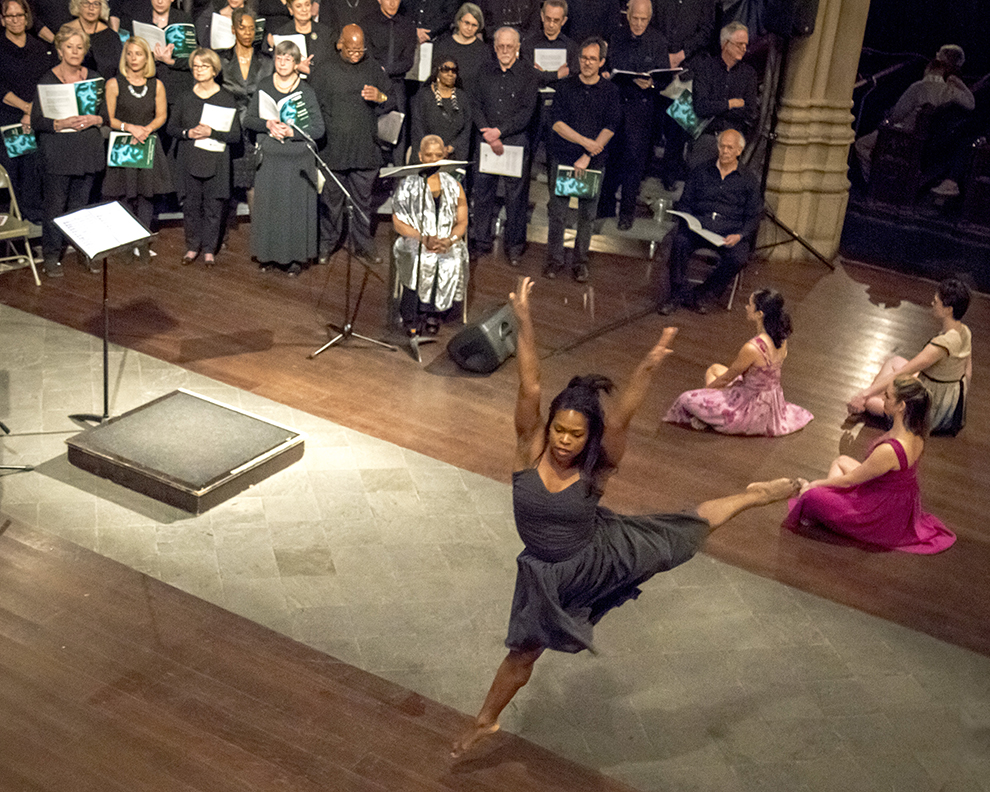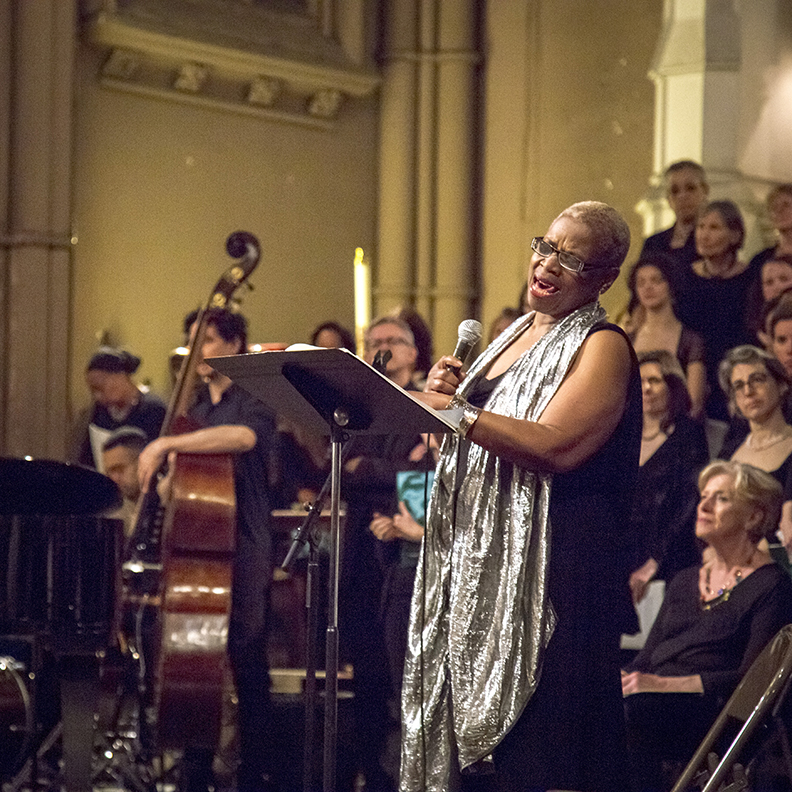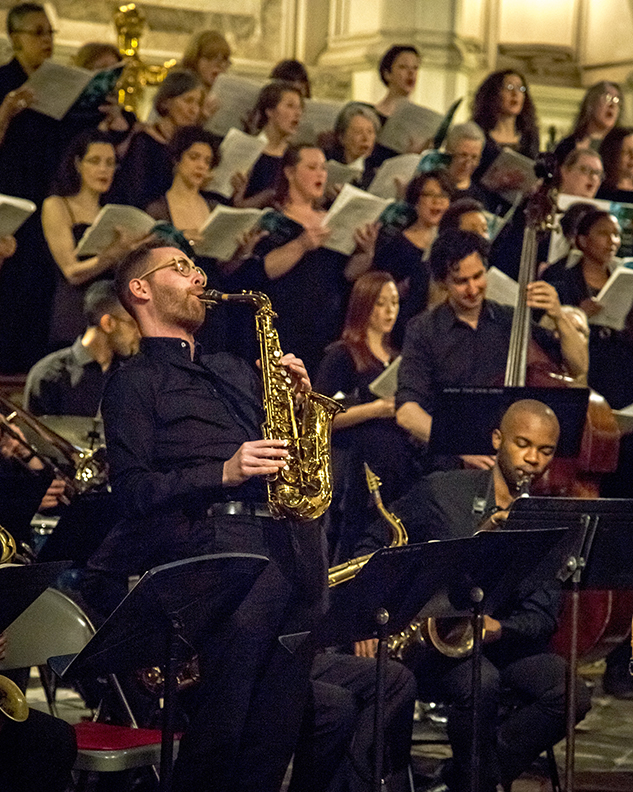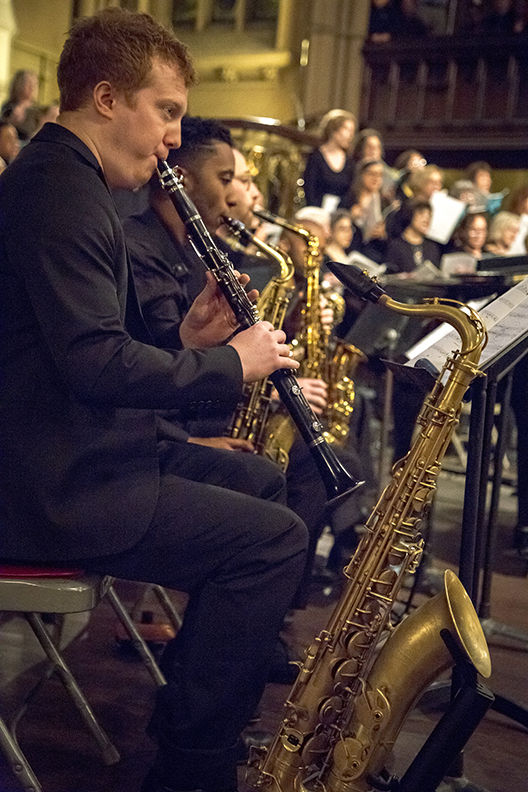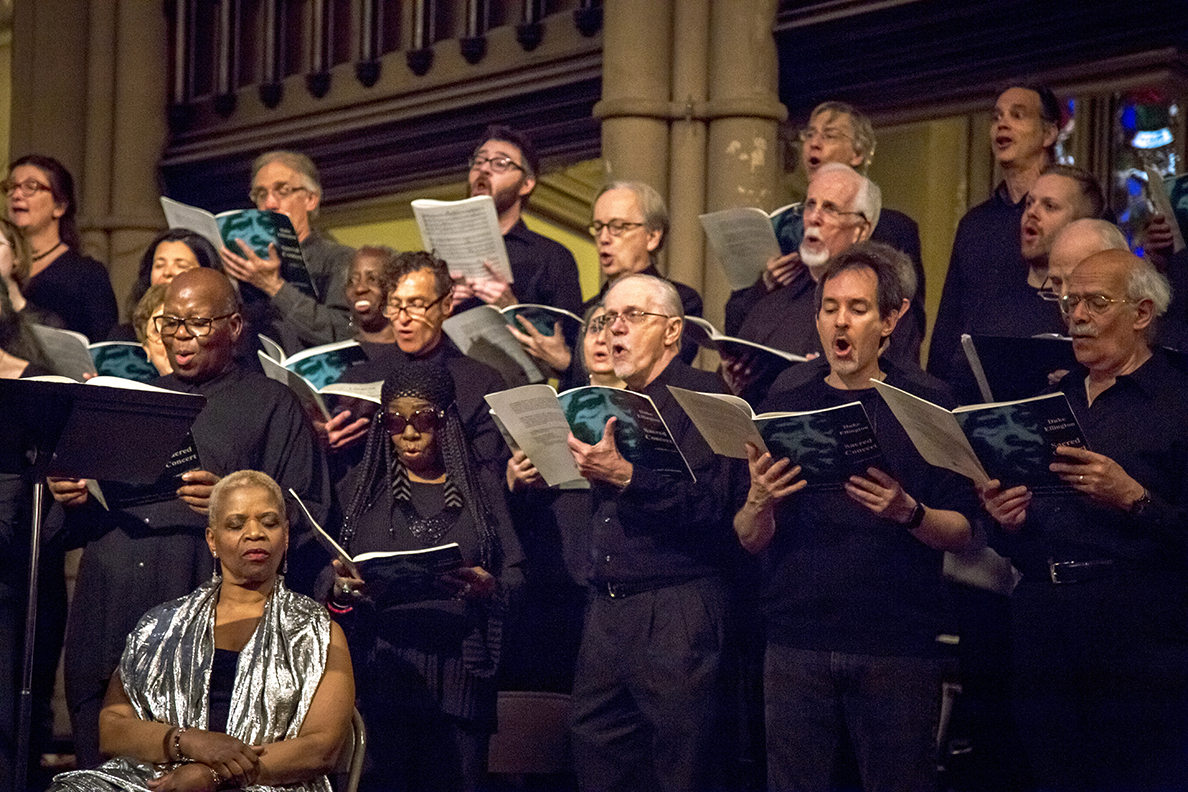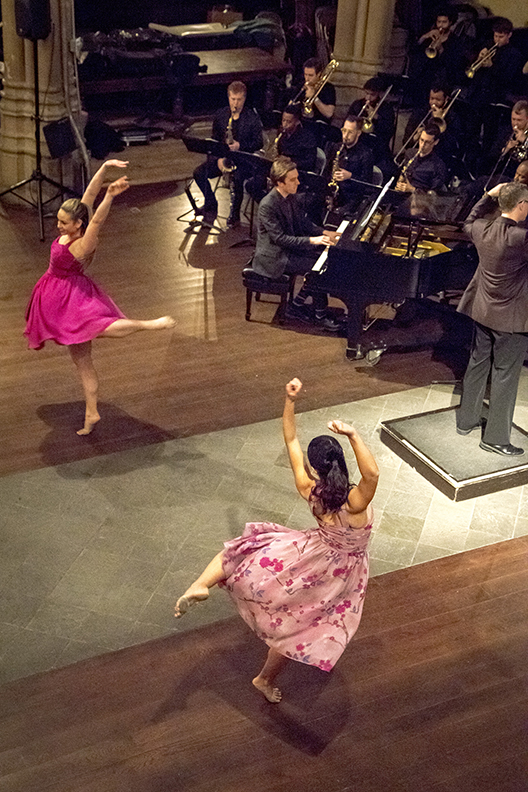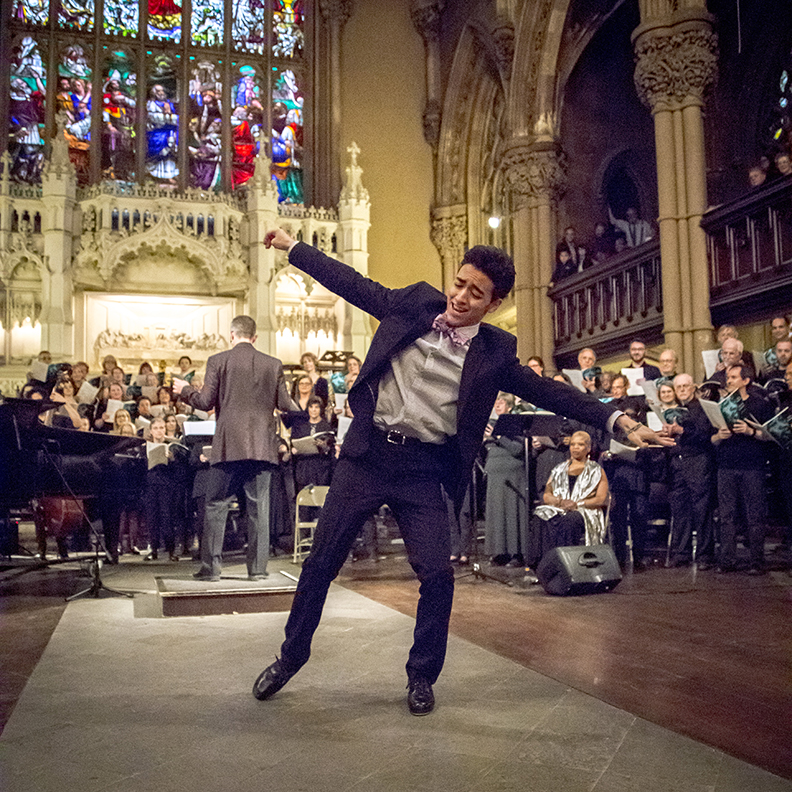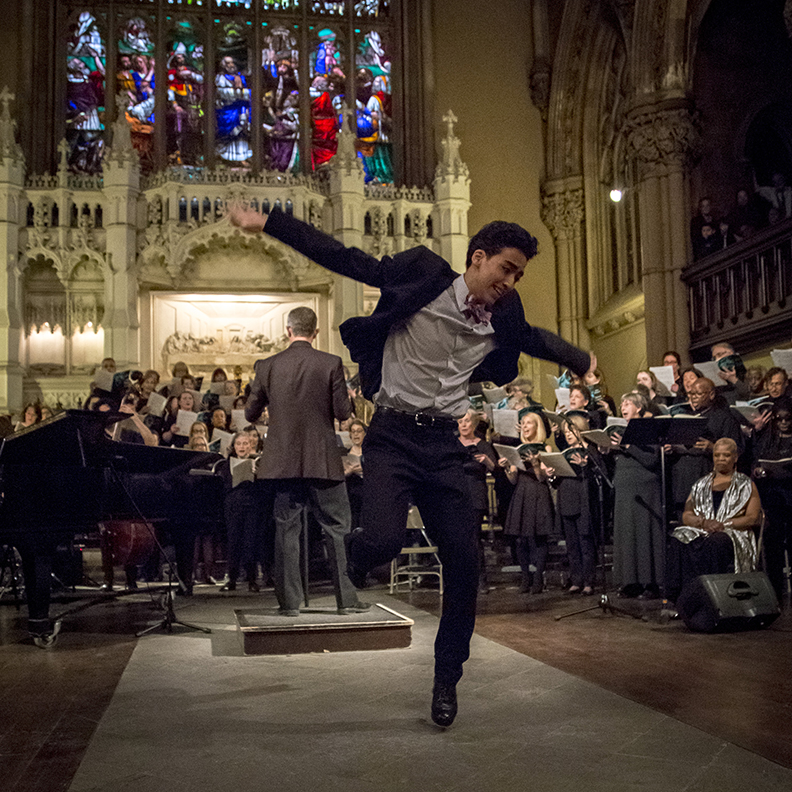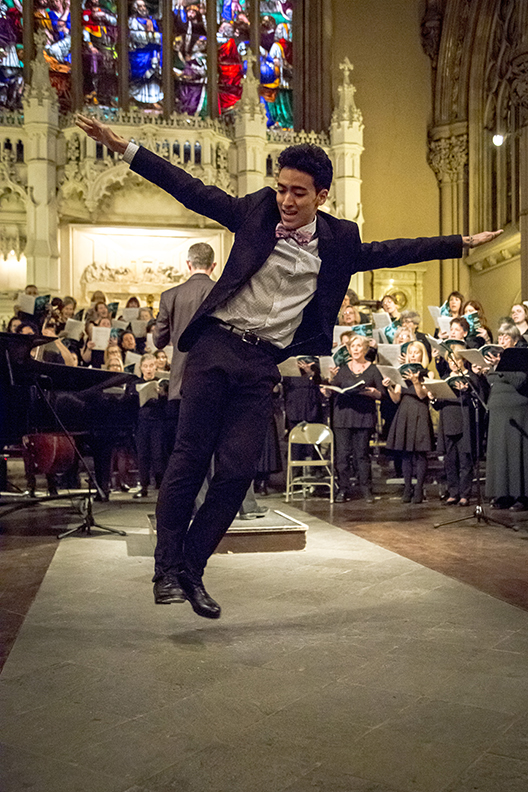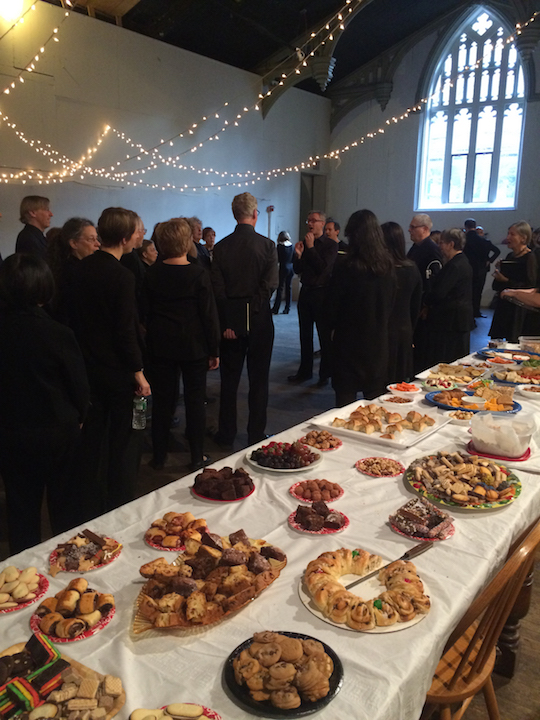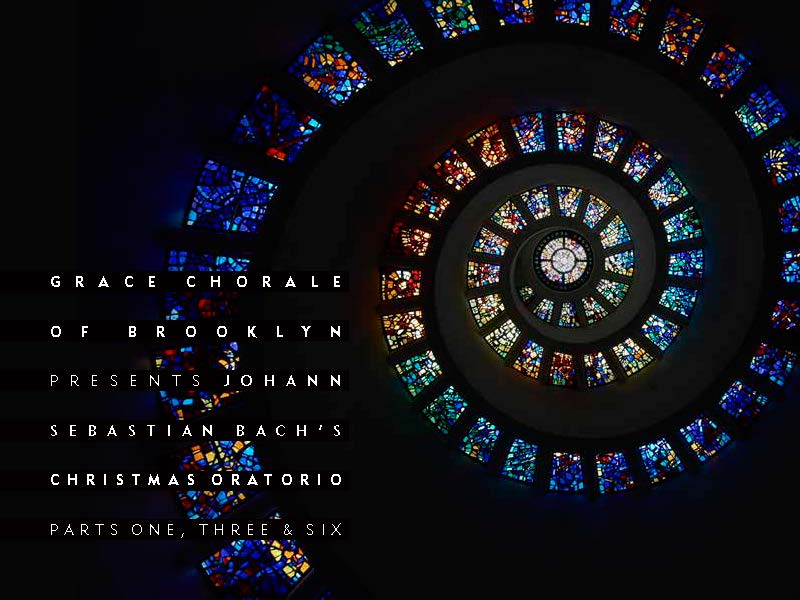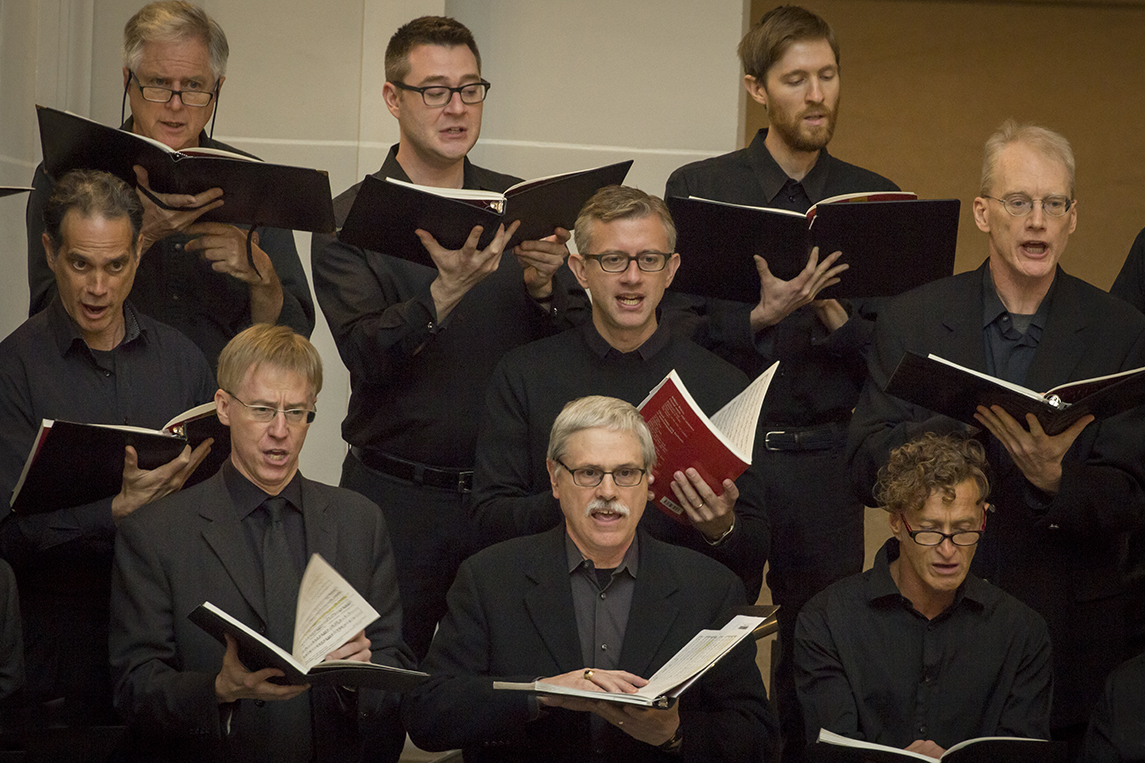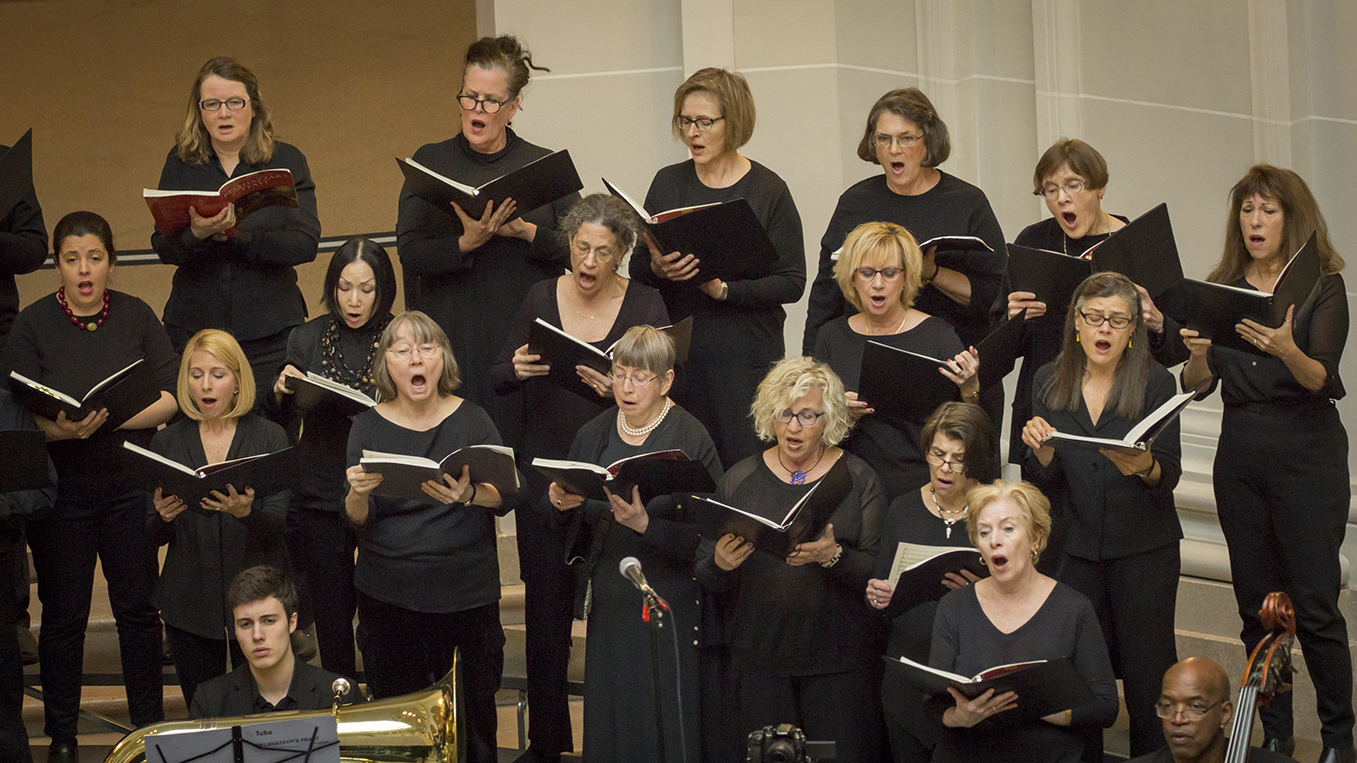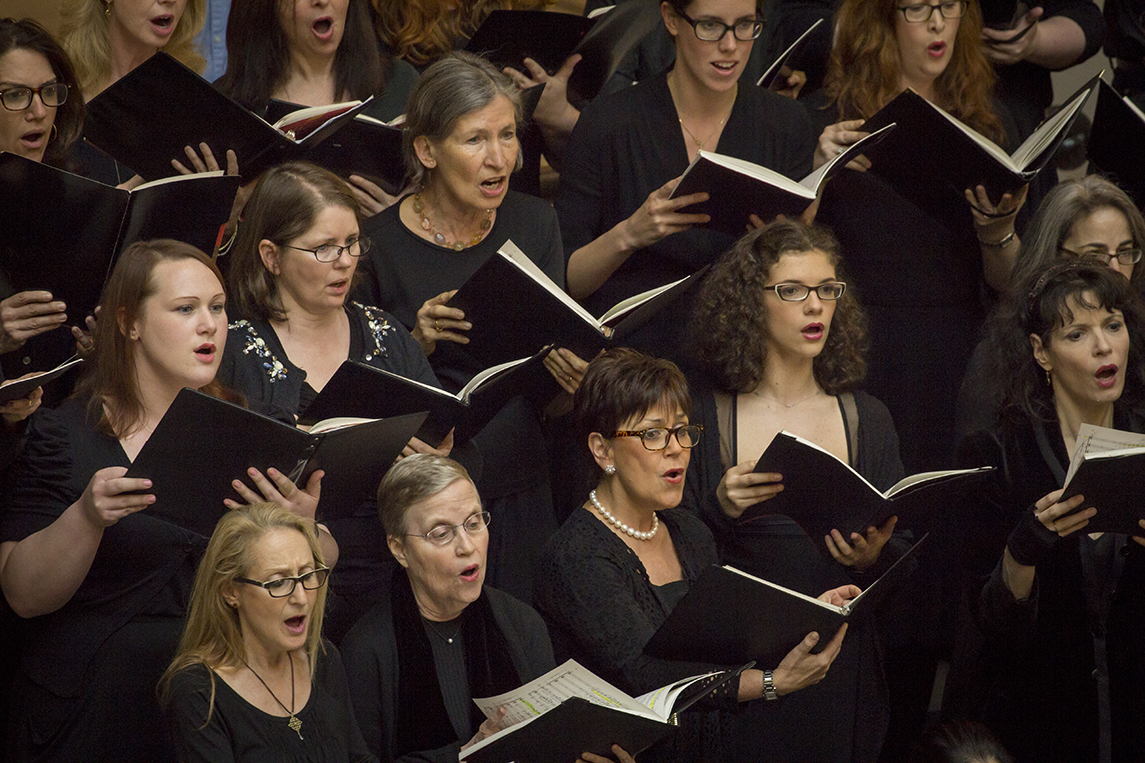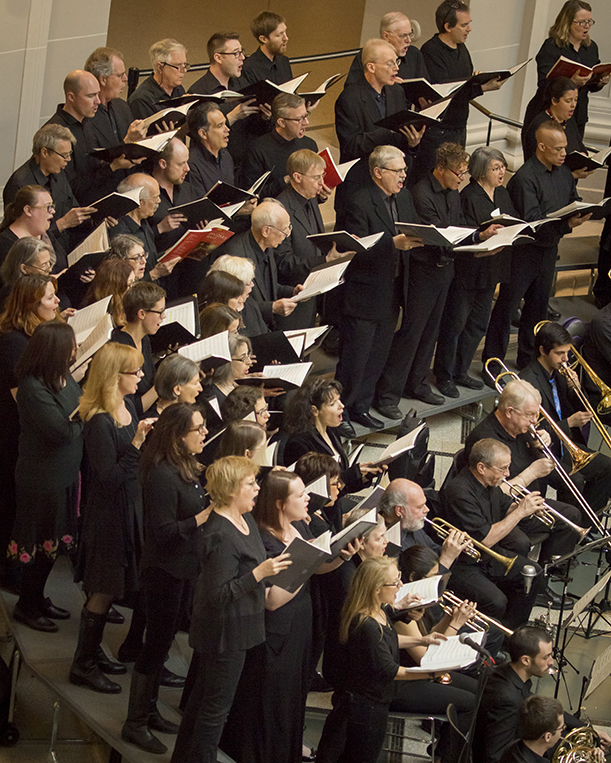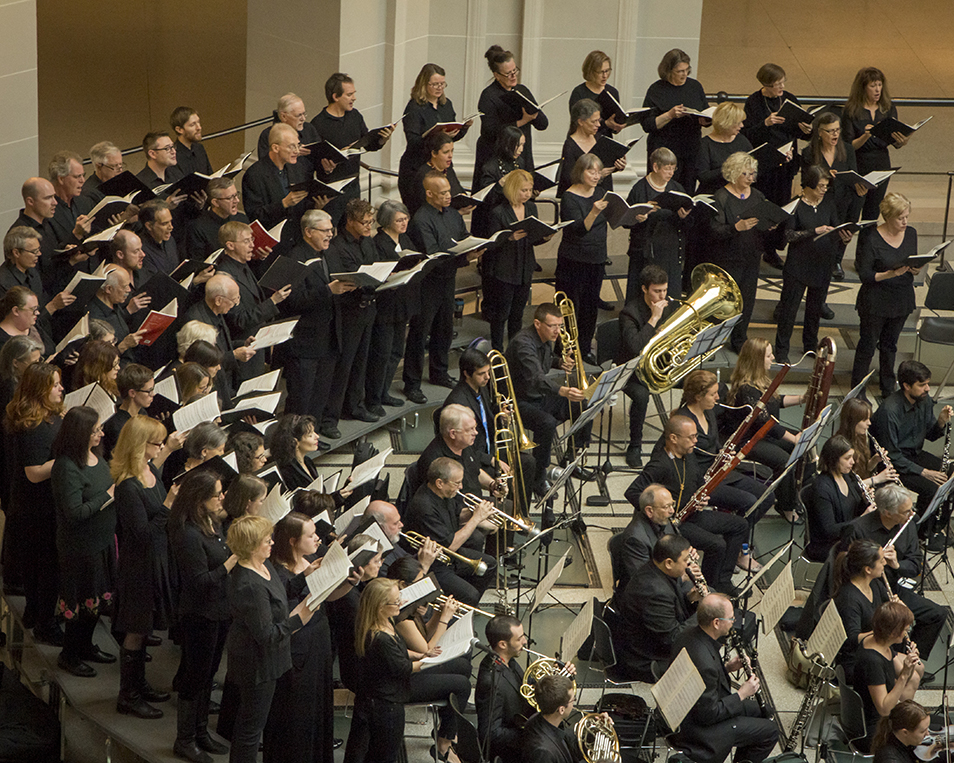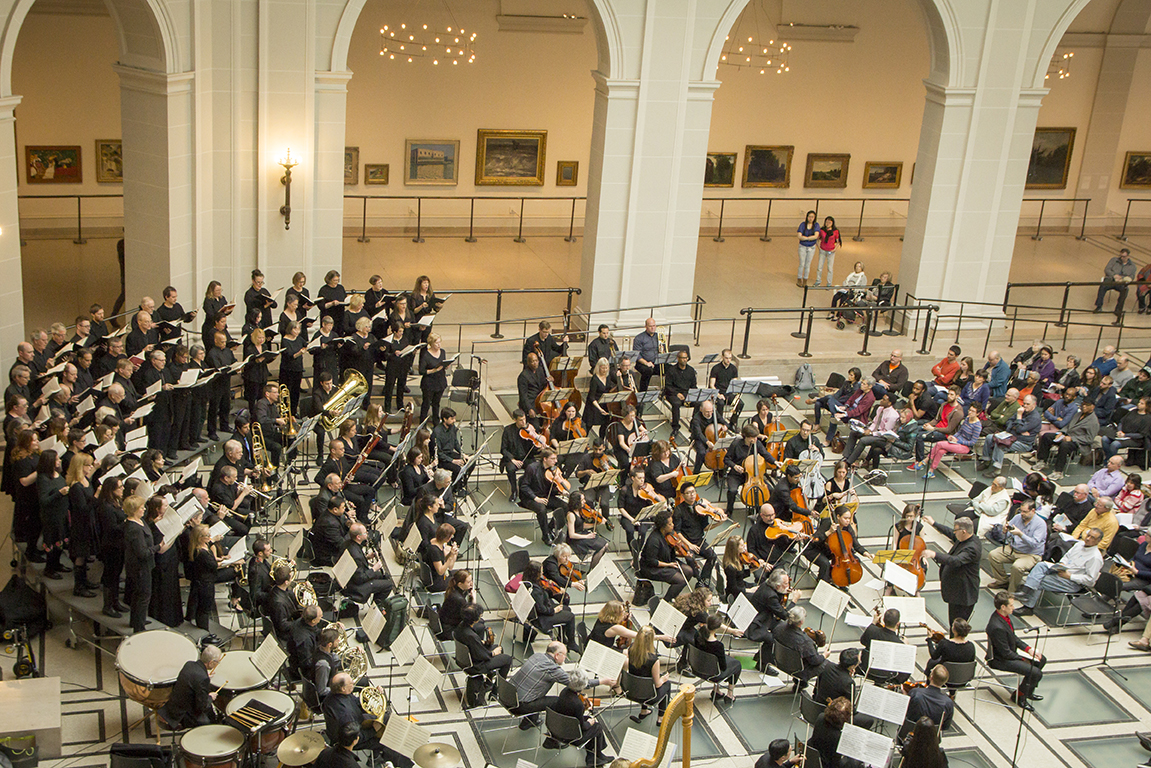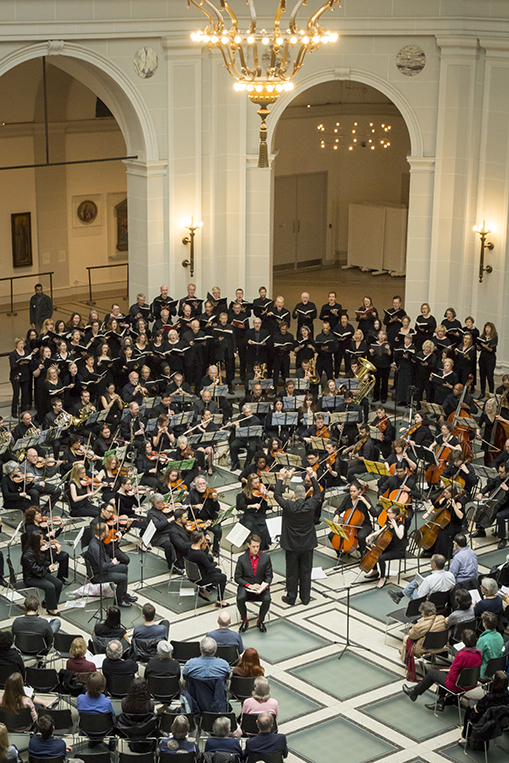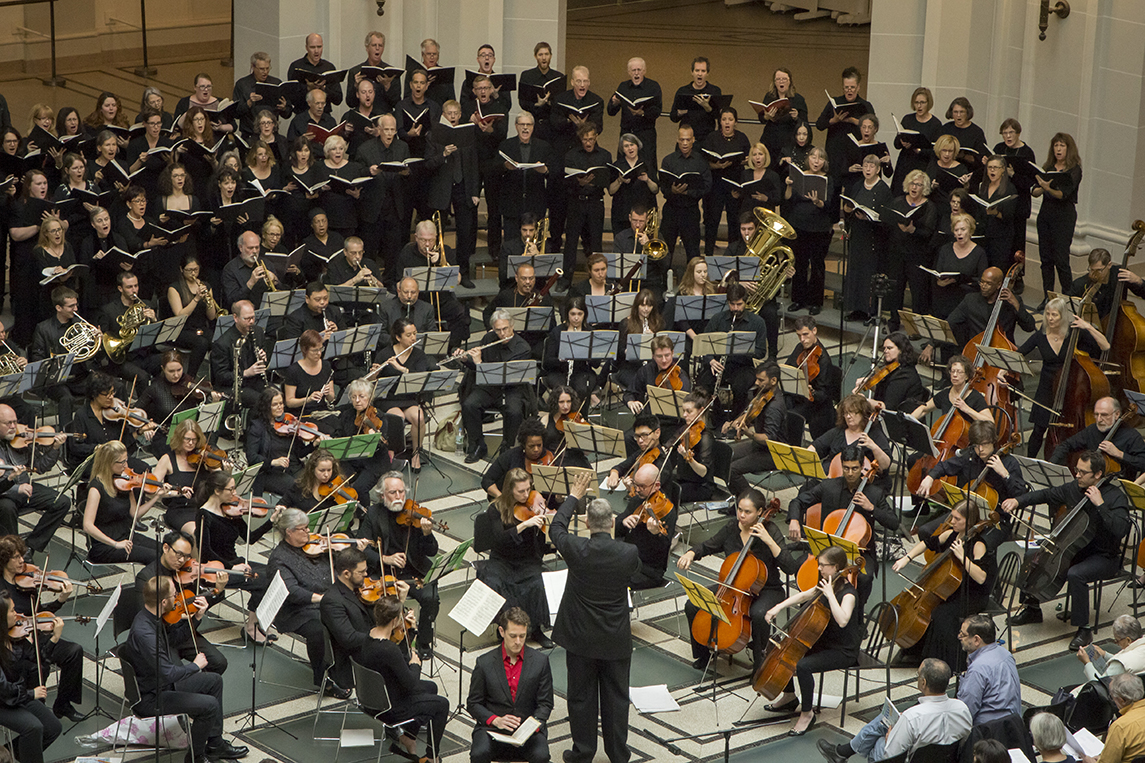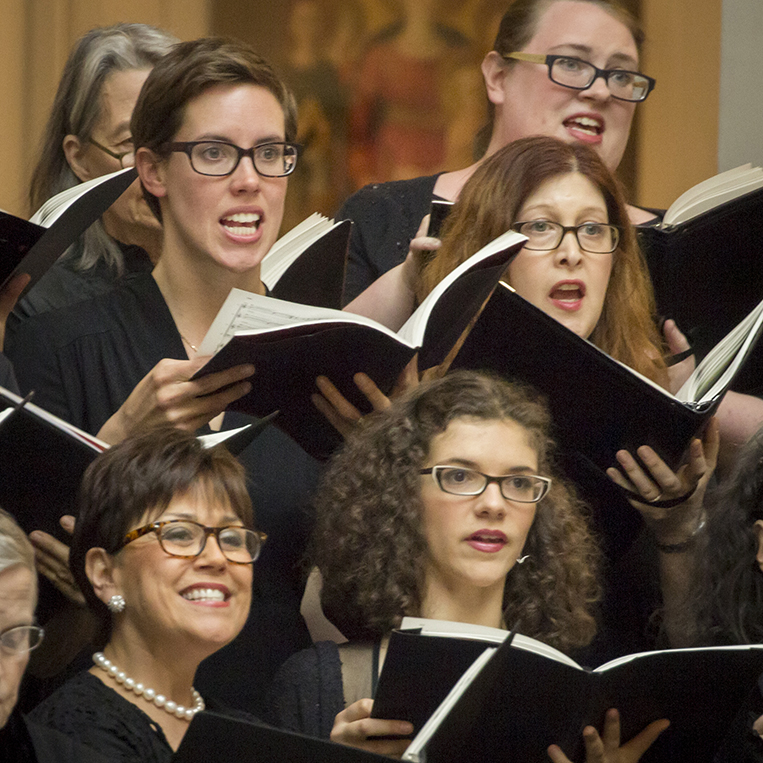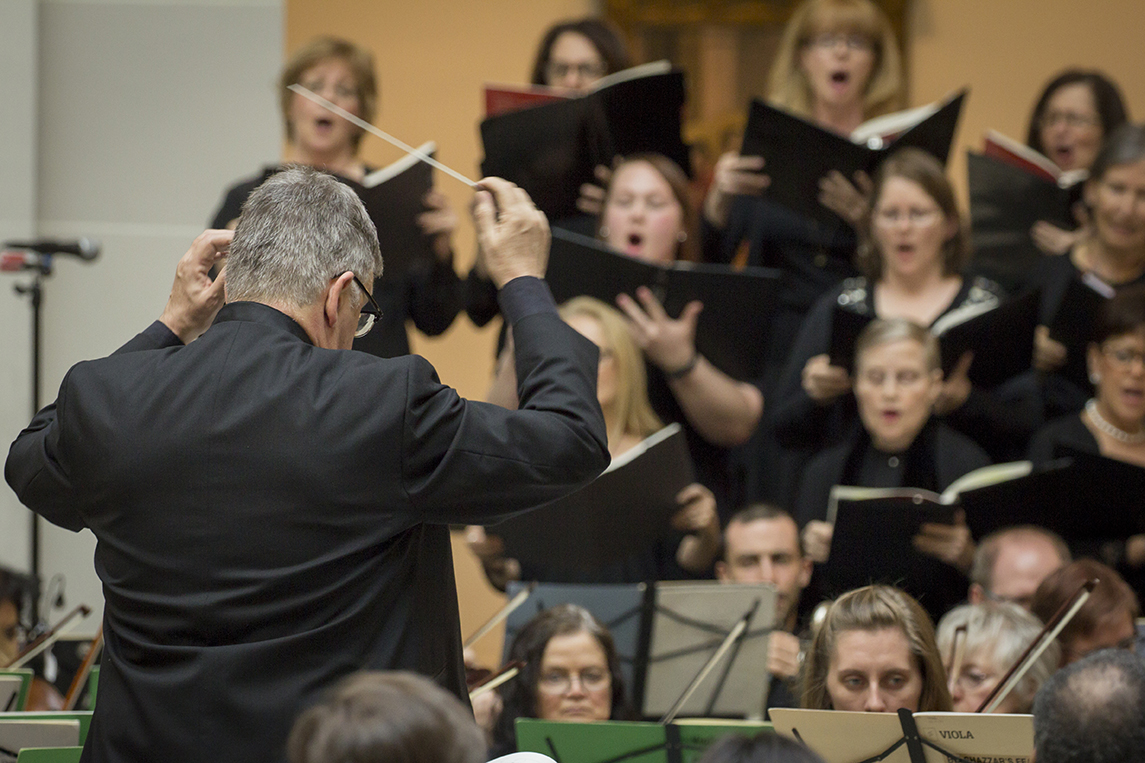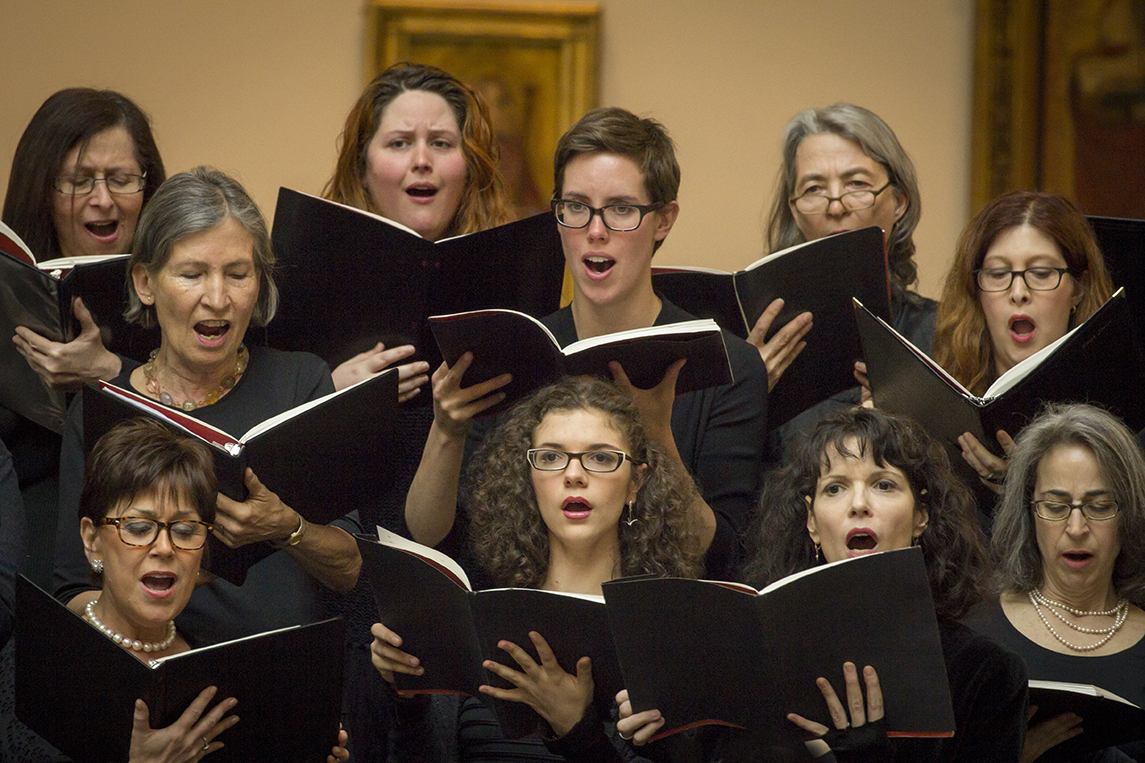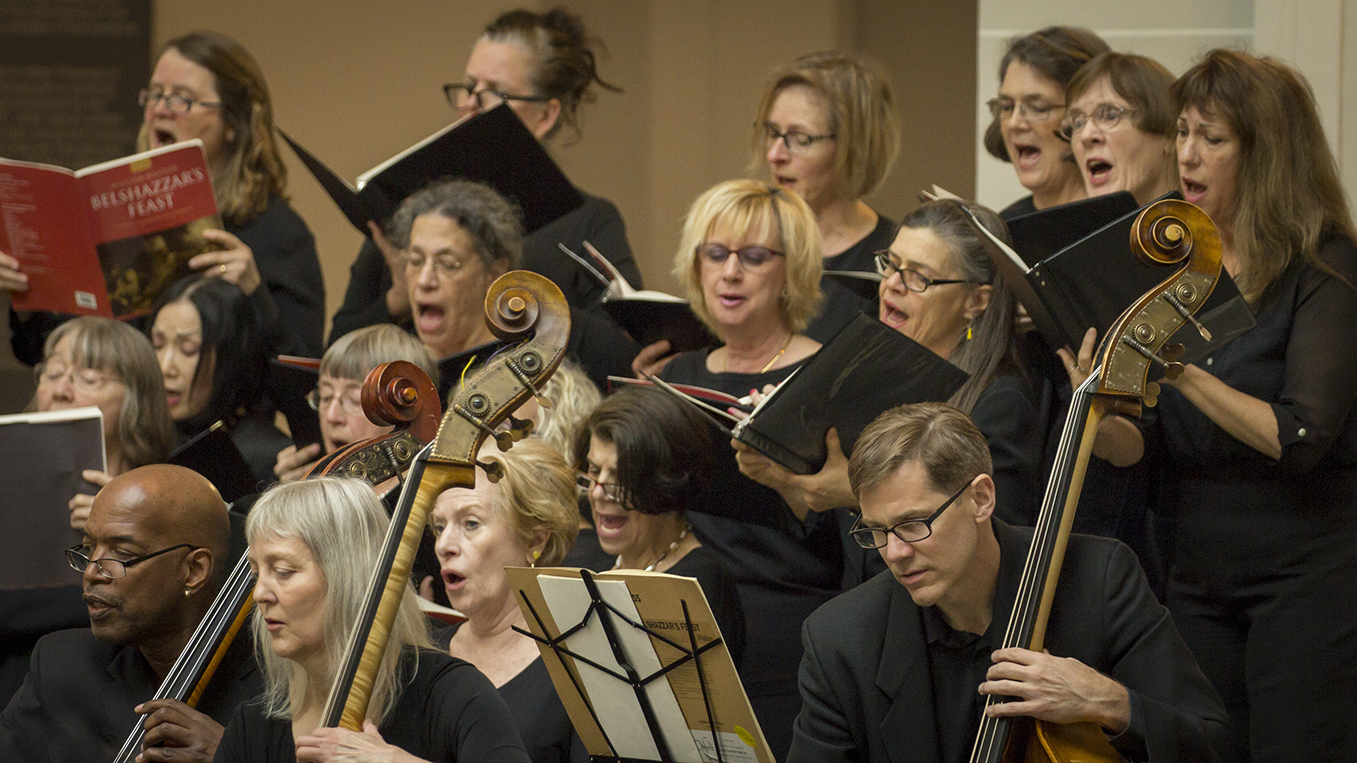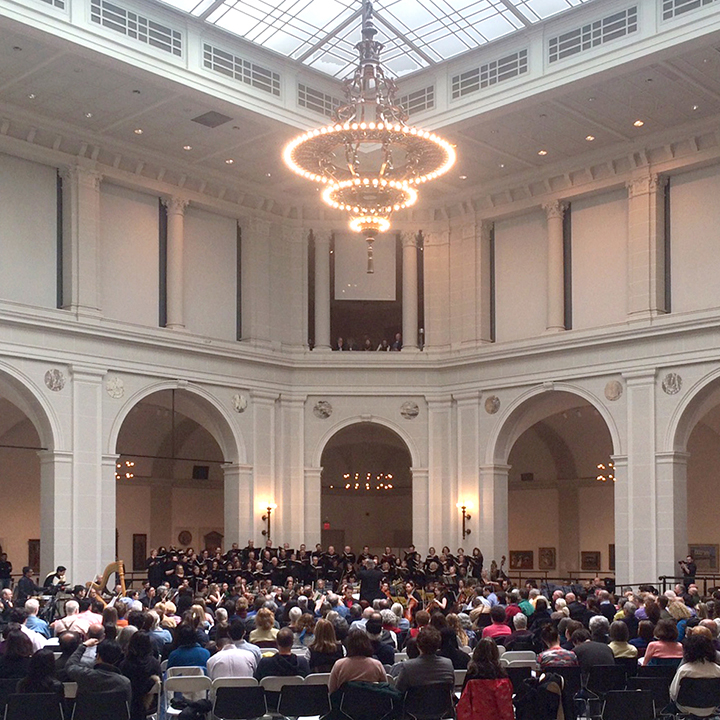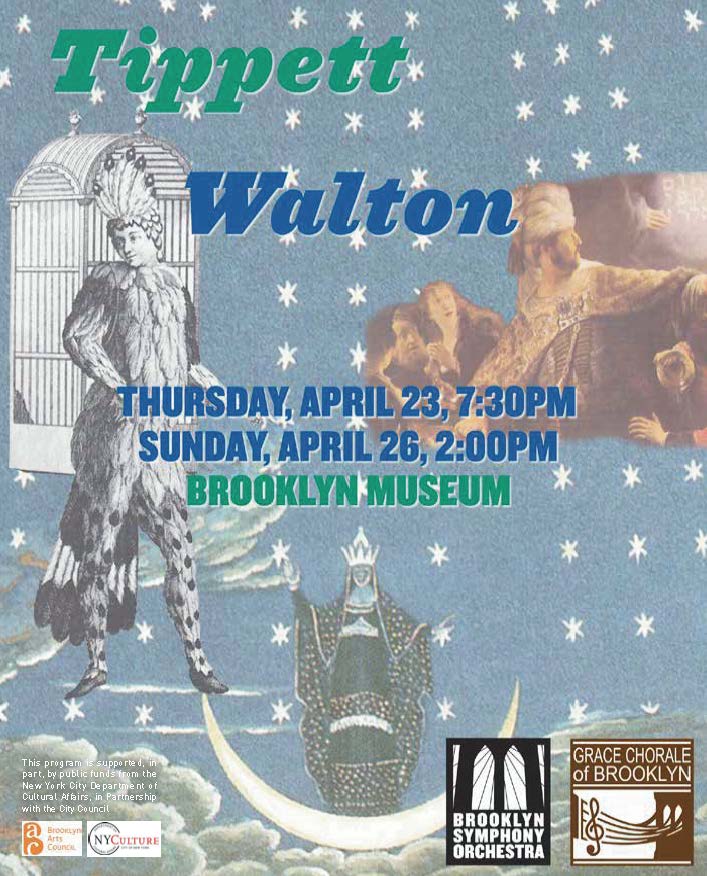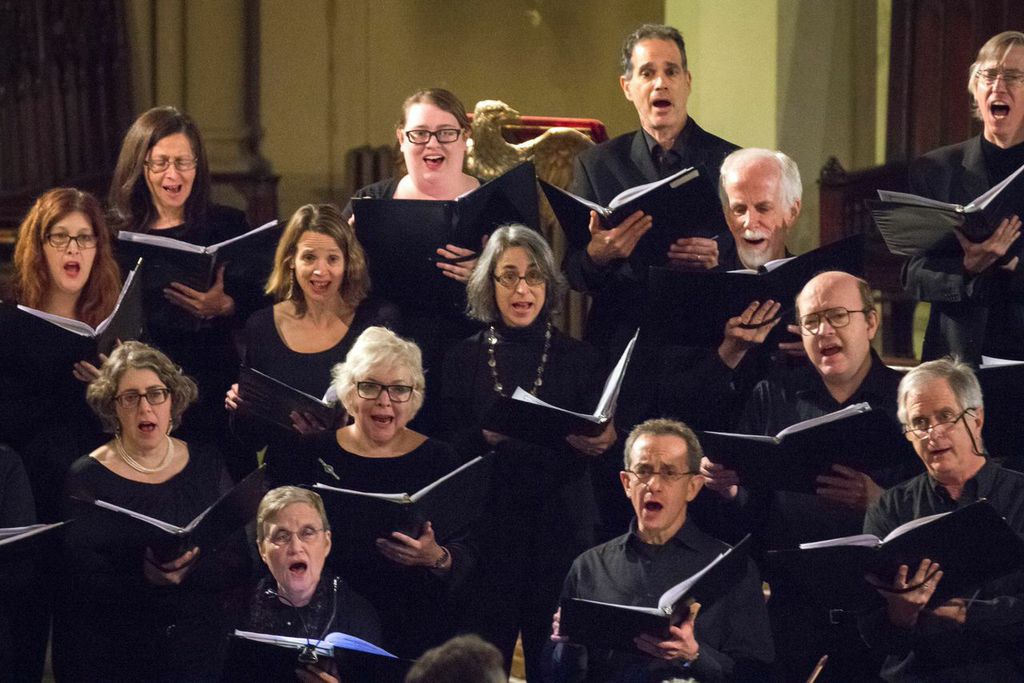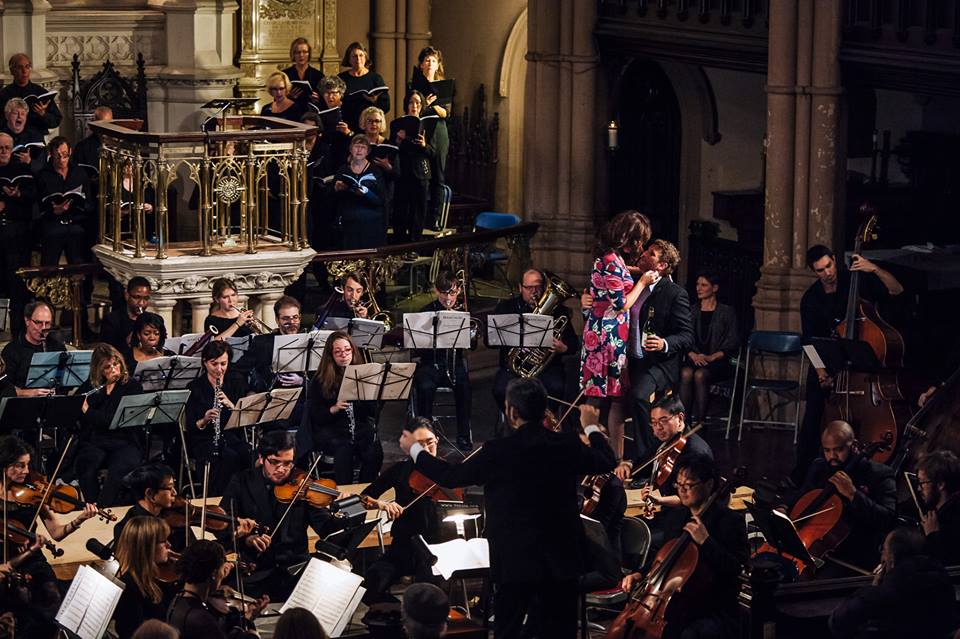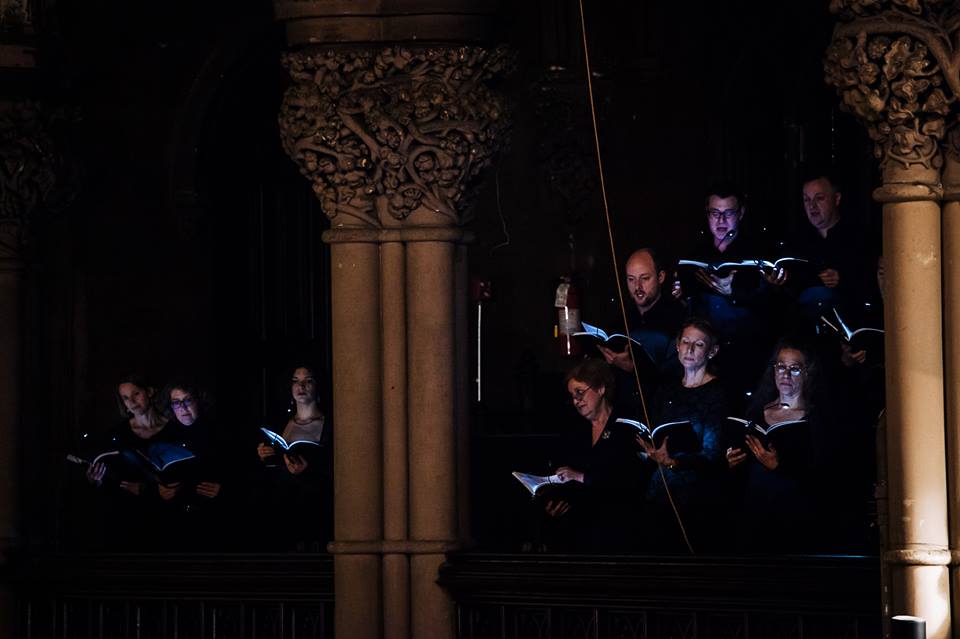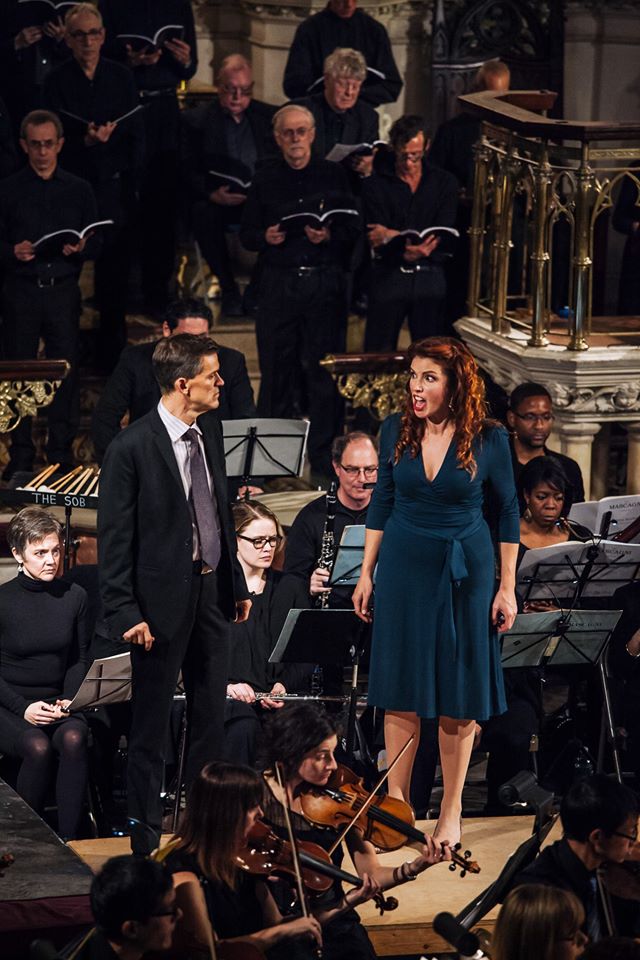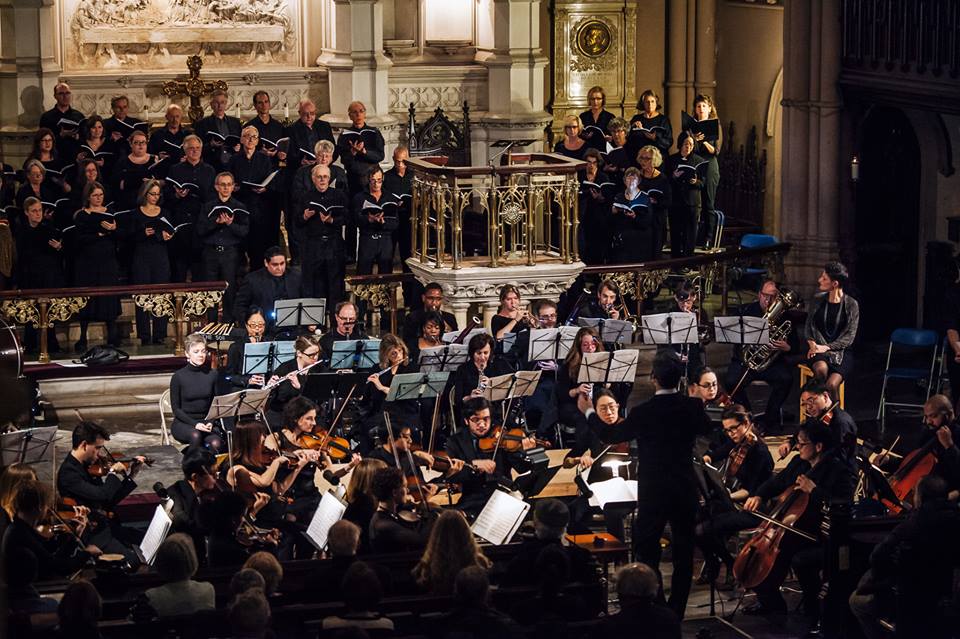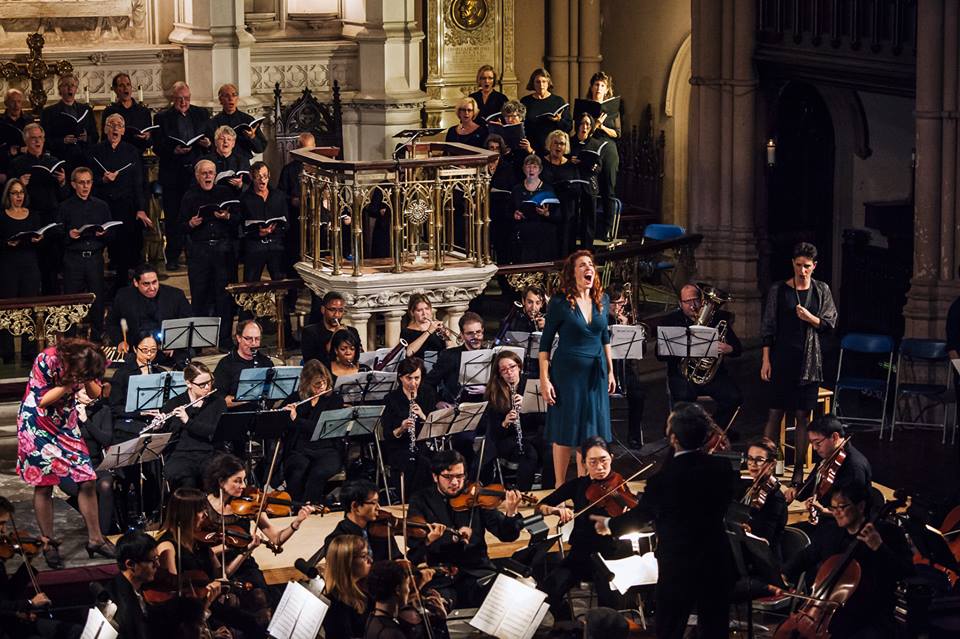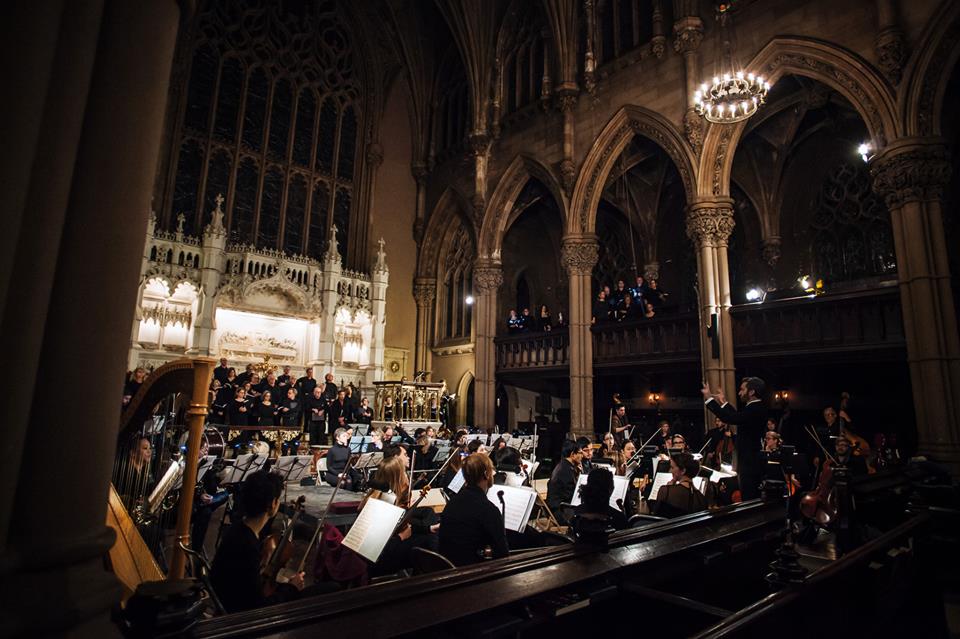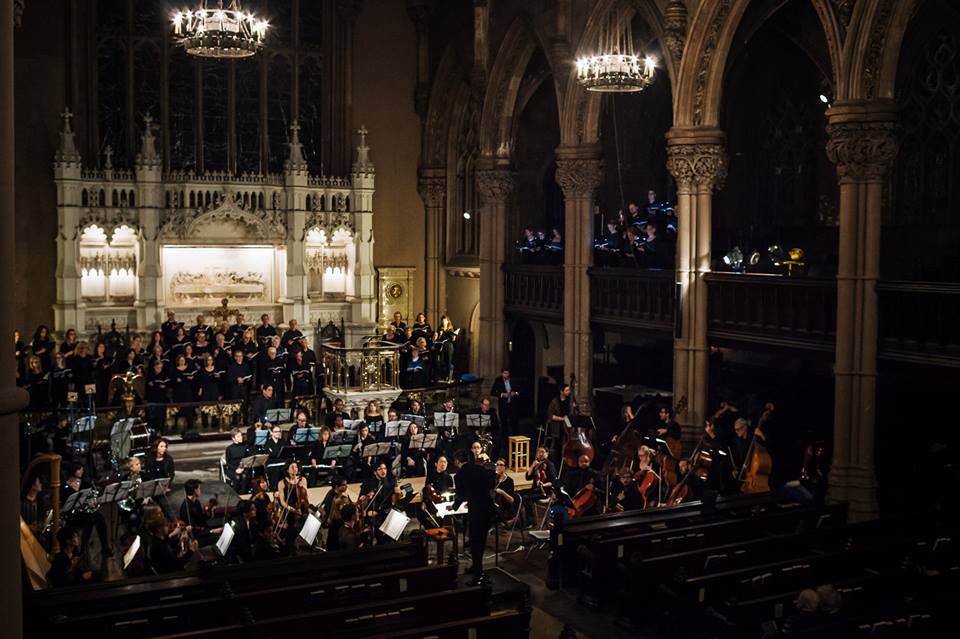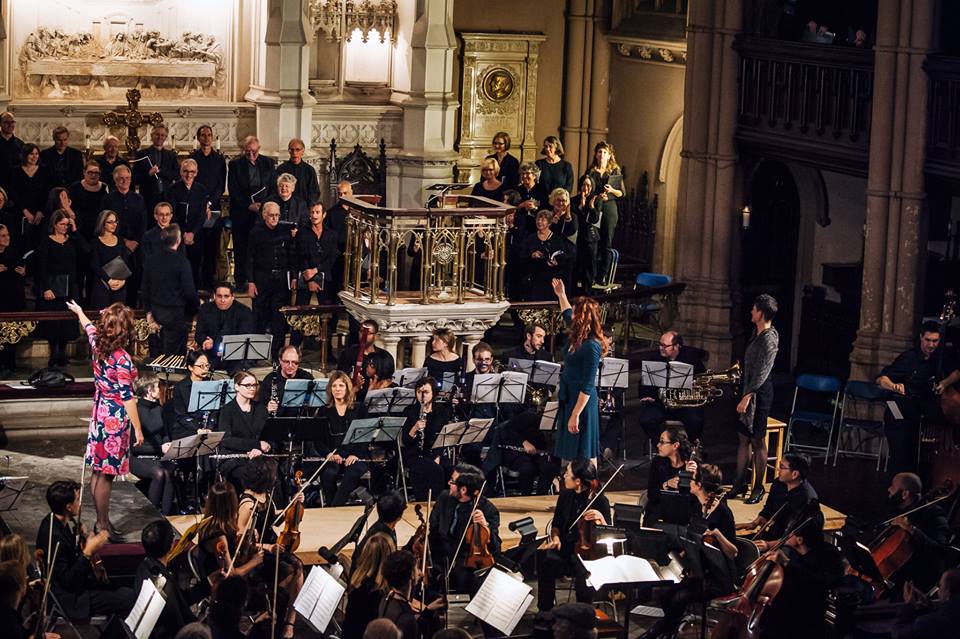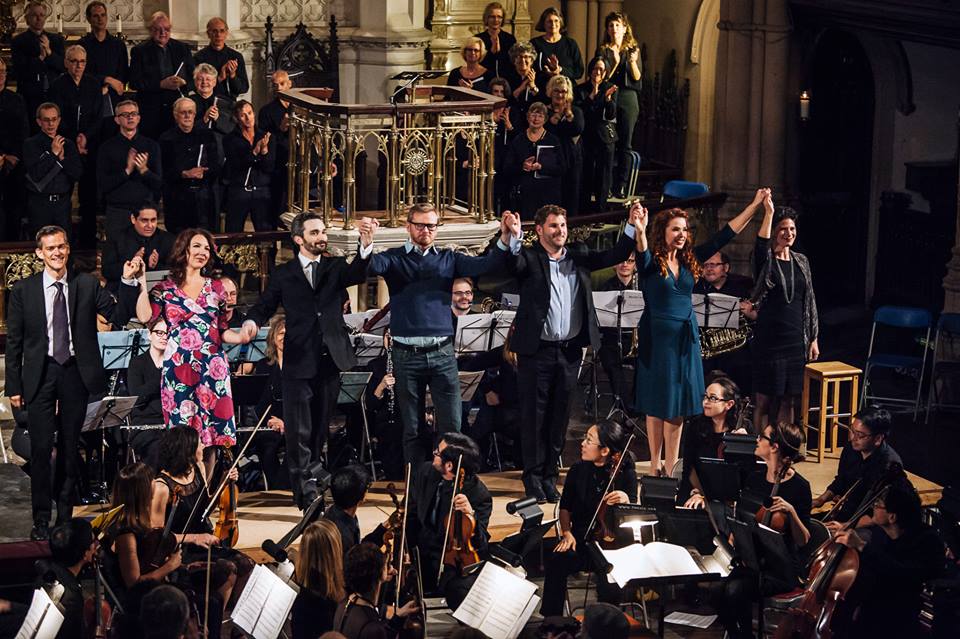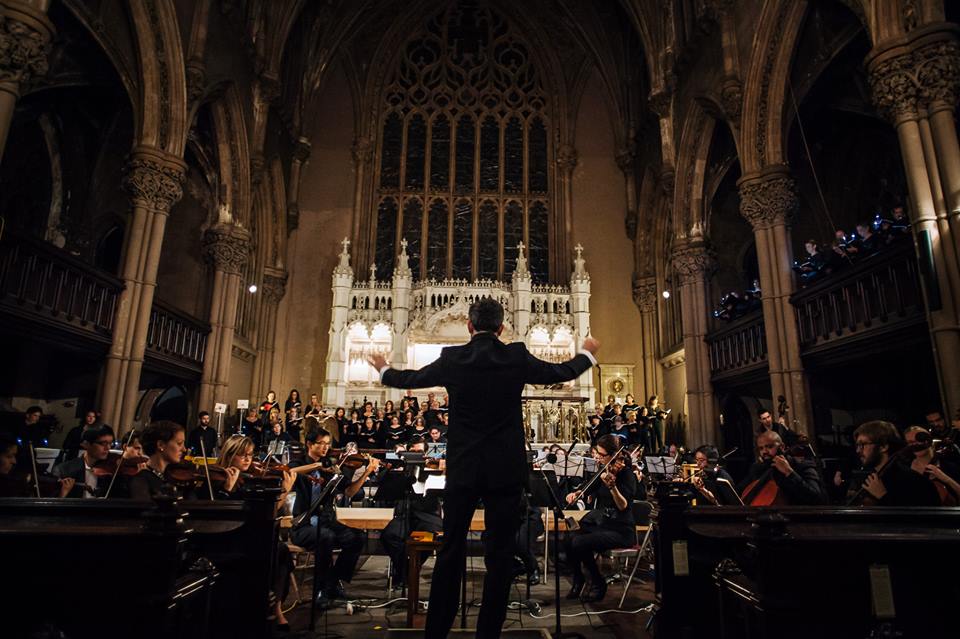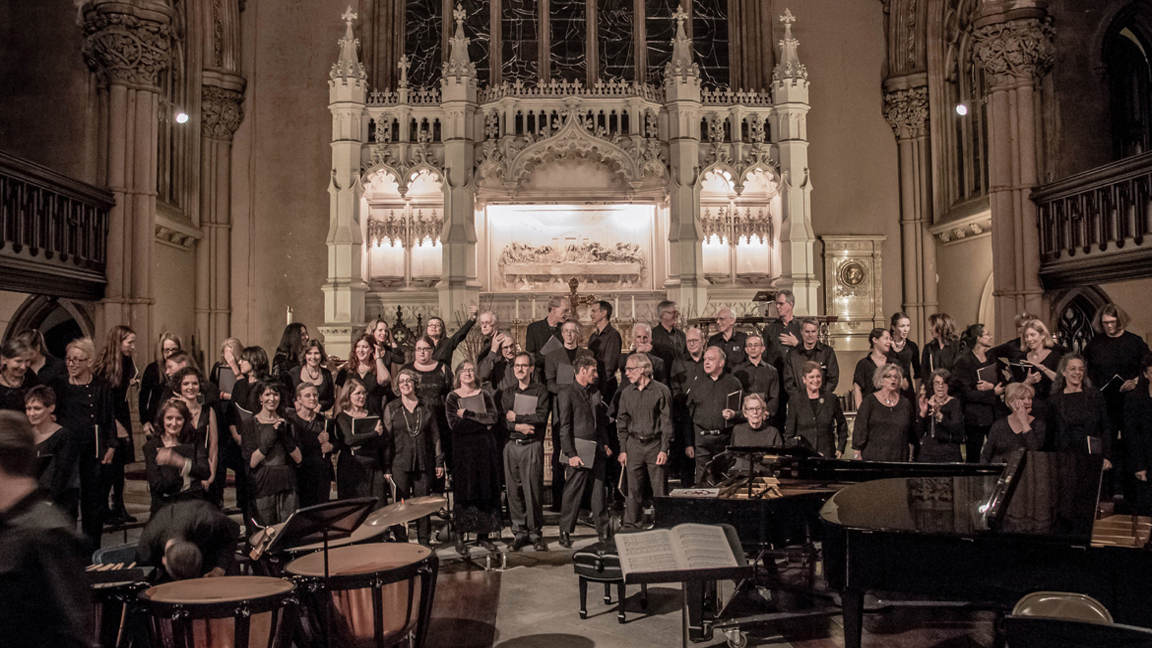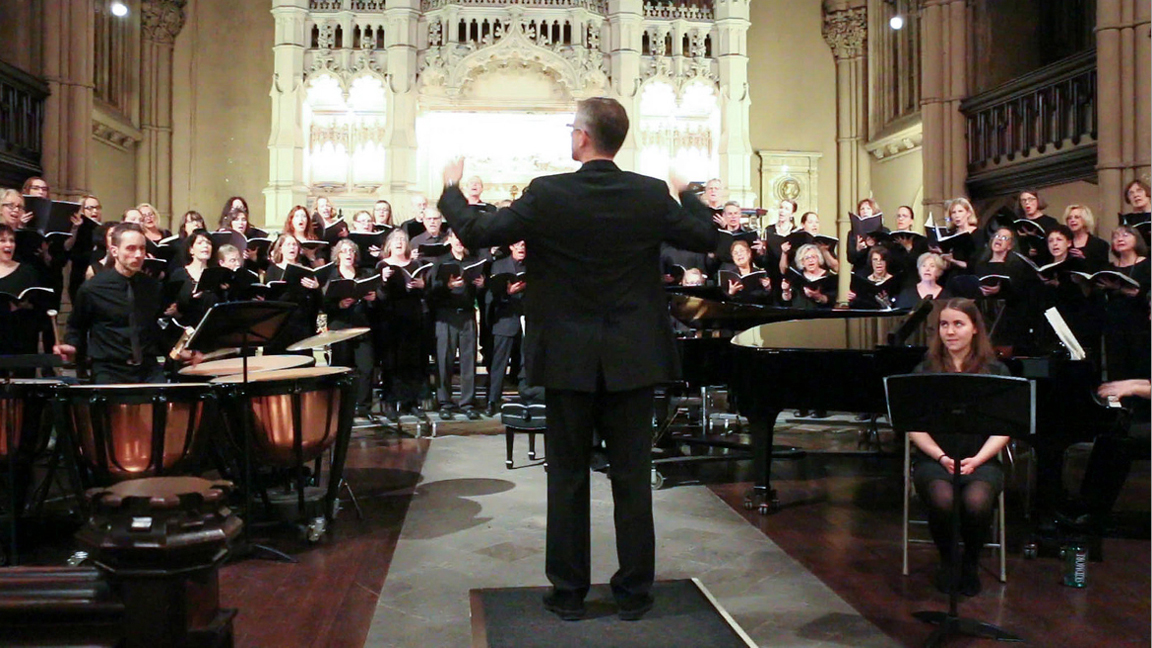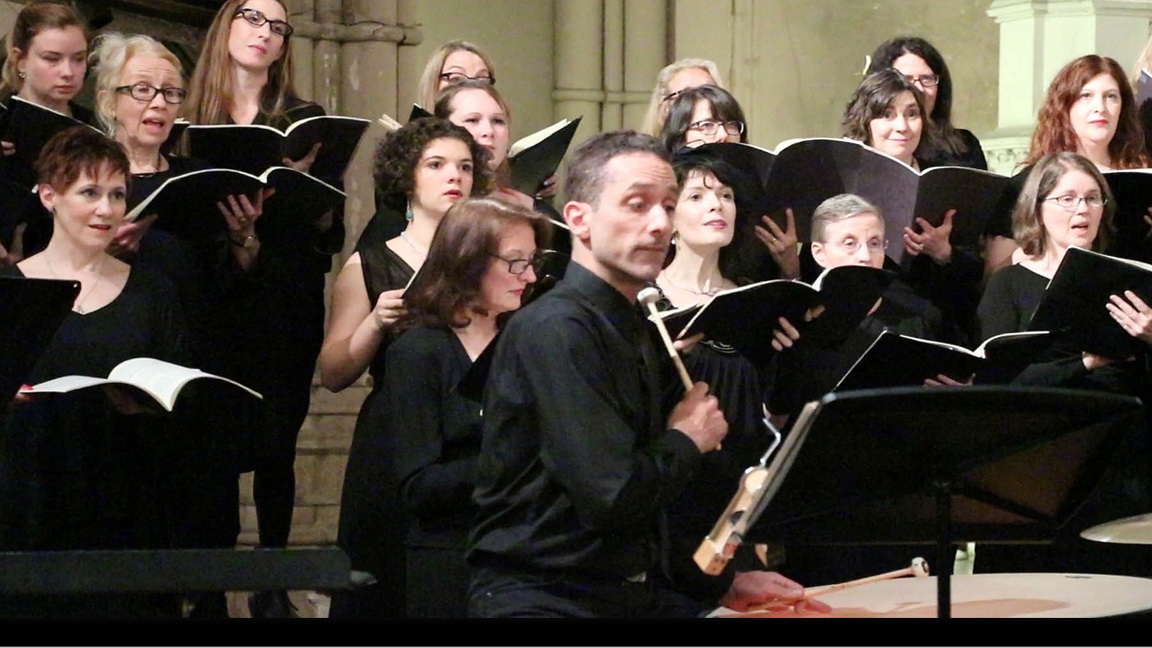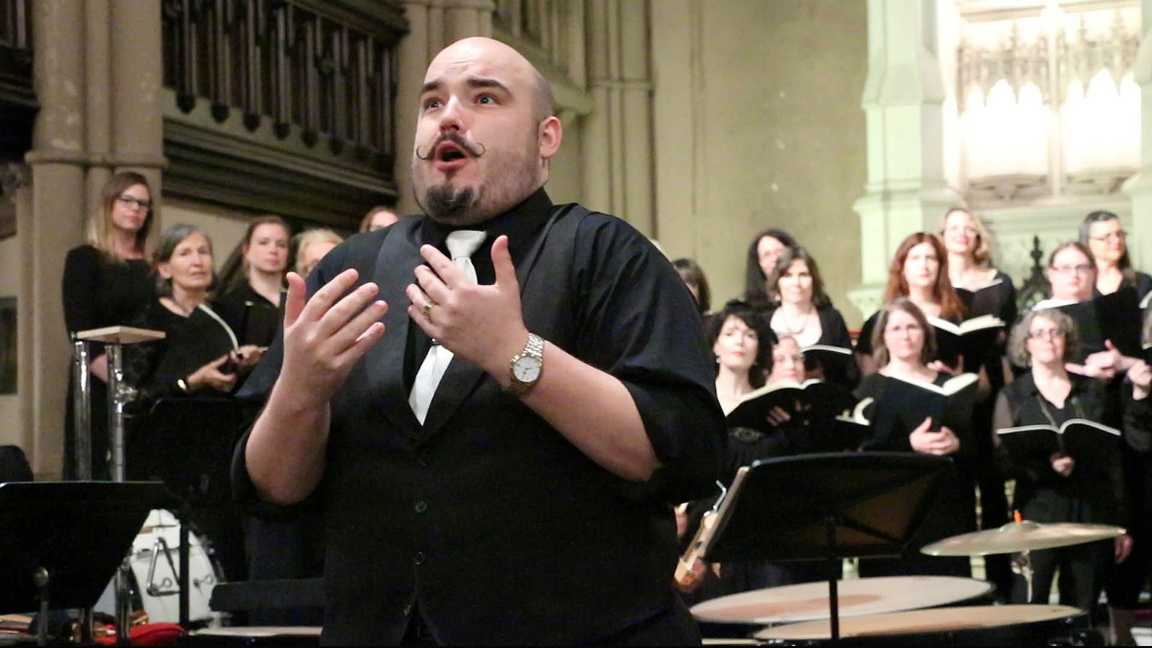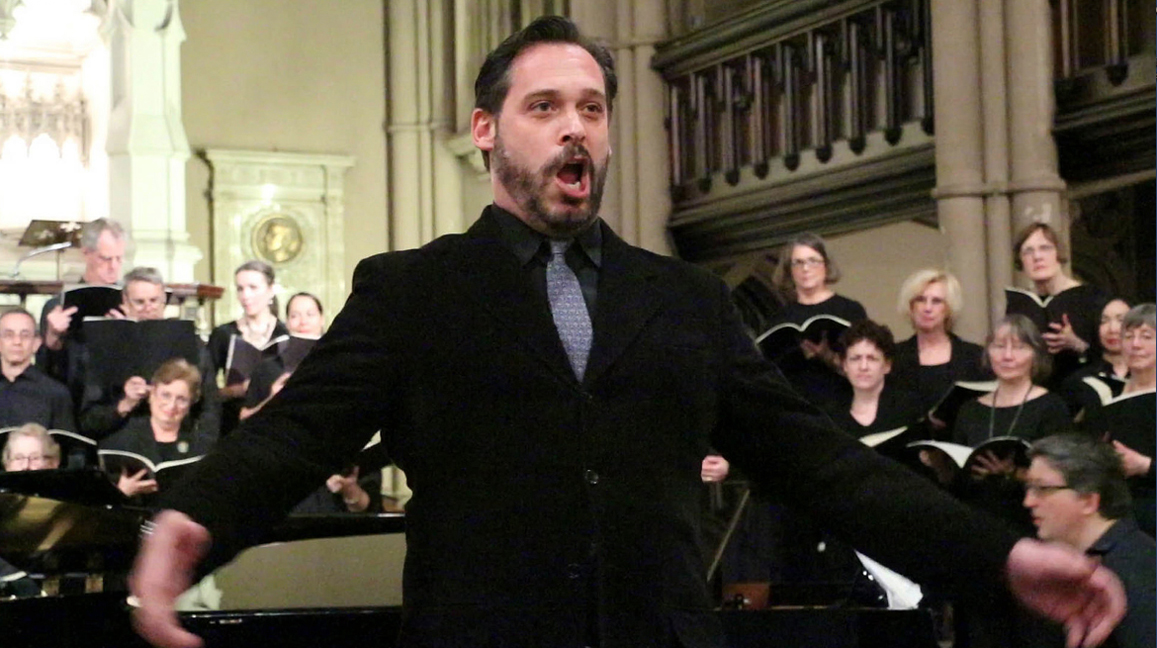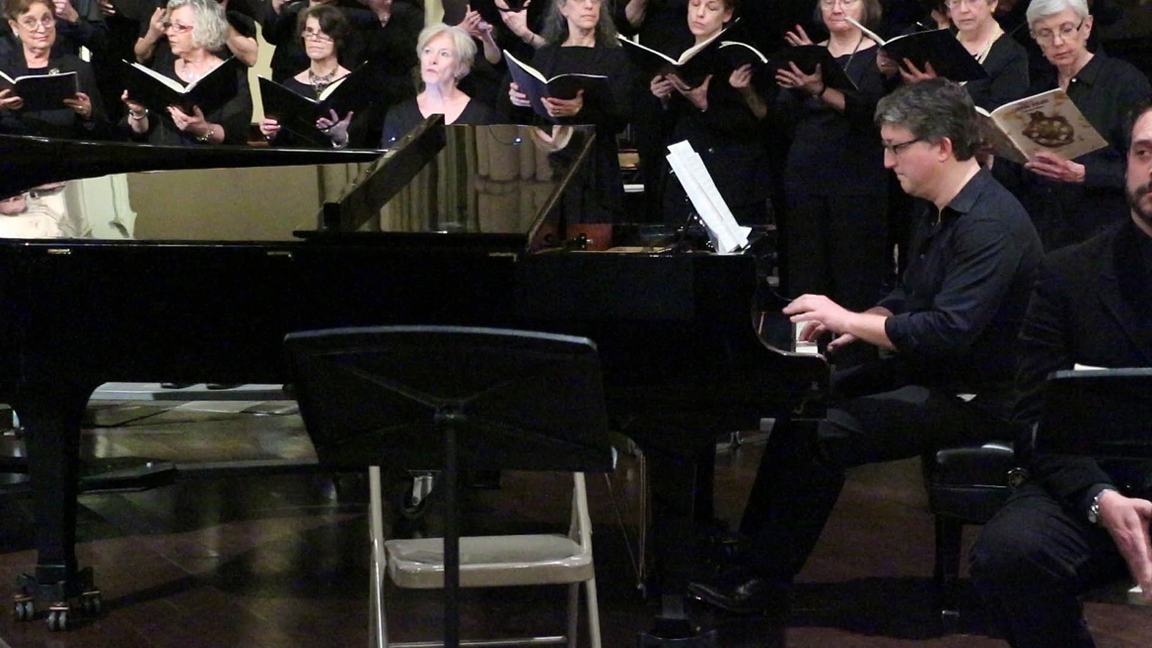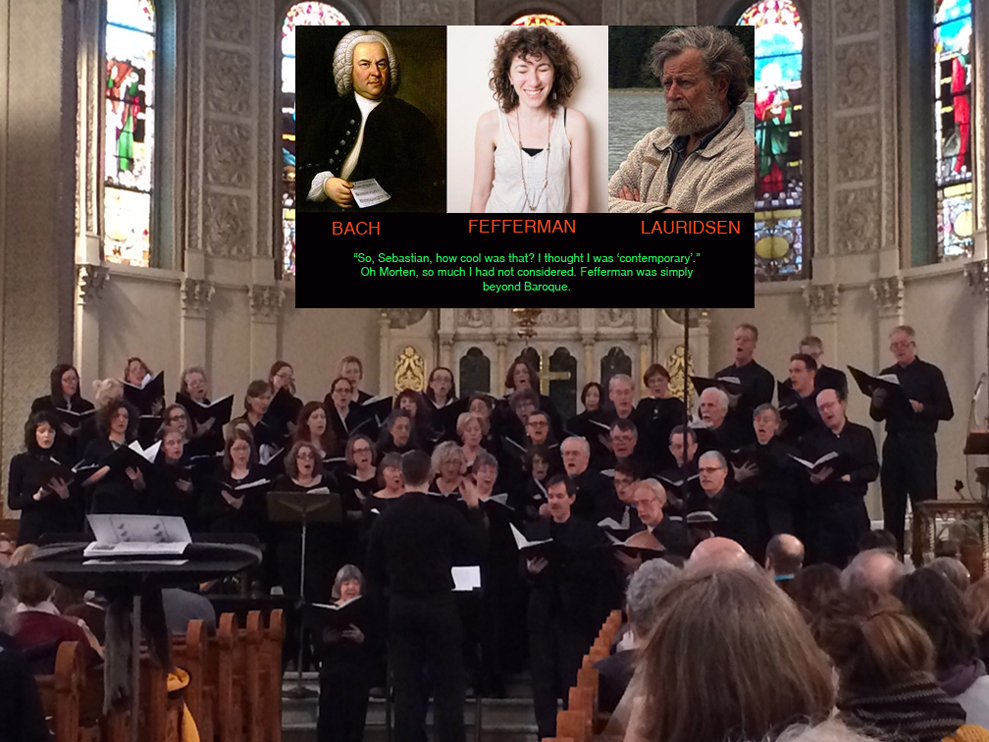On May 5th and May 6th, GCB presented Messiahs False and True, three works which address the theme of charismatic leaders, religious and political, throughout history.
Music clips from the concert below:
We opened the concert with a short choral proclamation by Norwegian composer Knut Nystedt (b. 1915-2014), titled "Cry Out and Shout," a powerful acapella anthem bursting with excitement. The joyful text from the Prophet Isaiah calls people to sing out to God and assures redemption: "The Lord is strength and song...with joy shall ye draw water from the wells of salvation."
The center piece of the program was “Messiahs False and True”, a choral cantata by Rex Isenberg which premiered in NYC in 2015. This is a dramatic piece, a marriage of theater and chorus, featuring narrated texts from figures as diverse as Julius Caesar, Barack Obama, Ralph Waldo Emerson and Jim Jones – figures both heroic and villainous that by force of “the incredible blind faith of their followers…transformed these individuals from relative unknowns to figures of messianic proportions.” The stage and film actor, Paul Hecht (see bio below) was the Narrator.
The program concluded with "Rejoice in the Lamb", a cantata for 4 soloists, choir and organ, composed by Benjamin Britten in 1943. Britten chose a poem by 18th century poet Christopher Smart whose "Jubliate Agno" was written while in a mental asylum where he was judged to be in the grips of a religious mania. The poem has great color, drama and imagery, depicting idiosyncratic praise and worship by all of God's creation. Britten captures the warmth of Smart's peculiar vision with dancing rhythms, and tender harmonies.
The concert was presented at the landmark Plymouth Church of the Pilgrims in Brooklyn Heights, a historically significant setting where Abraham Lincoln, Martin Luther King and other charismatic leaders were invited to deliver speeches over the course of the last 160 years!
Paul Hecht is a stage, film and TV actor. He made his debut on Broadway as the Playerin Tom Stoppard’s Rosencrantz & Guildenstern are Dead, (Tony award nomination 1968). His most recent Broadway appearance was in the dual roles of John Ruskin & Jerome K. Jerome in Stoppard’s Invention of Love. Other Broadway roles include John Dickinsonin 1776(performed at the Nixon White House), Nathanin the Bock-Harnick musical Rothschilds,Rufio in Shaw’s Caesar &Cleopatra,and Belcredi in Pirandello’s Henry IV, (both with Rex Harrison), Dick Wagnerin Tom Stoppard’s Night & Day,(with Maggie Smith). He has appeared in Movies with Jeremy Irons, Howard Stern, Sissy Spacek, Chris Rock, Jane Fonda and Kris Kristofferson. TV audiences may have recognized him over the years as Charlesin Kate and Allie, and as a variety of unsavory characters in Law & Order, Queer as Folk, and Family Re-Union(with Bette Davis). He has recorded extensively for the Canadian Broadcasting Corporation where he hosted a live radio show. He has recorded dozens of books for Recorded Books (Alexander McCall Smith, Ray Bradbury, William Safire, Thomas Mann) and performed in numerous literary/musical programs, He reads to children in deepest Brooklyn as part of NY State’s Pre K for all program and served as President of the New York Branch of SAG from 1991-1995.
Our Venue at Plymouth Church is a historic church located at 57 Orange Street between Henry and Hicks Streets in Brooklyn Heights. Plymouth Church's first pastor was Henry Ward Beecher, who became a leading figure in the abolitionist movement. His sister was Harriet Beecher Stowe, the author of the anti-slavery novel Uncle Tom's Cabin. The church itself became an important station on the Underground Railroad through which slaves from the South were secretly transported to Canada.
In 1860, Abraham Lincoln traveled to Brooklyn and participated in a church service. Today a plaque marks the pew where Lincoln sat. In 1867, Mark Twain joined a group from Plymouth Church traveling to Europe and the Holy Land. His satiric account of this pioneering tour group, The Innocents Abroad, was Twain's best-selling work throughout his lifetime.
In addition to Lincoln and Twain, many other famous writers and activists spoke at Plymouth. In February of 1963, Dr. Martin Luther King, Jr. preached a sermon on "The American Dream", echoed months later in his famous "I Have a Dream" speech at the Lincoln Memorial in Washington.
HISTORIC ORGAN
Plymouth owns one of New York City's most distinctive instruments: an Aeolian-Skinner organ known for its "American Classic" sound, installed in our Sanctuary in 1904, revised by the famed organ engineer G. Donald Harrison in 1937, and extensively restored in the 1990s.






